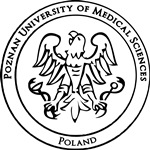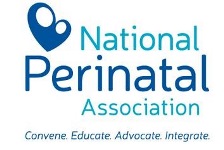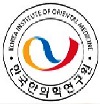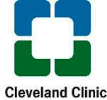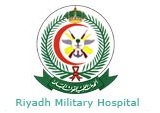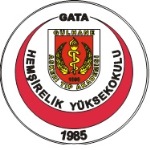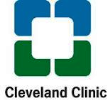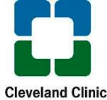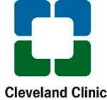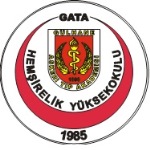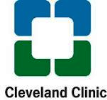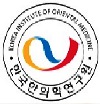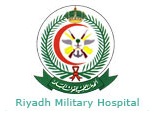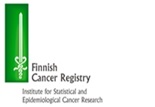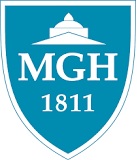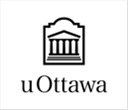Day 1 :
Keynote Forum
Jeffrey P. Harrison
University of North Florida, USA
Keynote: Personalized Healthcare: From Research to Practice
Time : 09:30 - 10:00

Biography:
Jeffrey P Harrison PhD, MBA, MHA is Chair of the Department of Public Health at the University of North Florida. He received his PhD in Health Services Research from VCU, his MBA from William and Mary and his MHA from the Medical College of Virginia. He is a Professor in Health Administration and teaches Strategic Planning. rnHe has twenty-five years’ experience in health care and is an international speaker on a wide range of topics. He has published extensively in the areas of Strategic Planning, Change Management, and Healthcare Technology. He has authored thirty nine professional articles and three book chapters. In 2015, he completed the second edition of his book: “Essentials of Strategic Planning in Healthcare” published by Health Administration Press. He is a Certified Healthcare Executive and a Fellow in the American College of Healthcare Executives. He was selected one of the “Top 100 Health Administration Professors”, in 2013. rn
Abstract:
Over the past decade, healthcare researchers have spent hundreds of millions of dollars in sequencing the first human genome. In addition, there is significant research in the use of stem cells to regenerate specialized tissue for treatment of individual patients. This session will address the use of this research to bring “Personalize Healthcare” to the patient. I will discuss the use of Human Genomics and other stem cell therapies across the continuum of Healthcare services. Specifically, I will explore the appropriate use of these new clinical technologies as an opportunity to enhance Palliative Care programs. The growth of “Personalized Healthcare” requires the creation of collaborative relationships between researchers, clinicians and healthcare leadership as process-focused care continues to develop. The growth of “Personalized Care” facilitates innovation across the continuum of healthcare practice and may be a cost effective approach to improving healthcare quality.
Keynote Forum
Justin Baker
St. Jude Children’s Research Hospital, USA
Keynote: Integrating pediatric palliative care into pediatric oncology
Time : 10:00 - 10:30
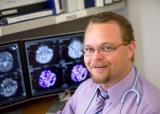
Biography:
As a pediatric oncologist, palliative care physician, member of the ethics committee and Phase I and end-of-life care clinical investigator at St. Jude Children’s Research Hospital, I am intimately aware of the distress experienced by children with advanced cancer and the ethical and end-of-life/bereavement issues surrounding their disease progression. I currently serve as the Chief of the Division of Quality of Life and Palliative Care at St. Jude as well as the medical director of our Quality of Life Service – the St. Jude palliative care team. I also serve as the Director of our Pediatric Hematology/Oncology fellowship program – the largest fellowship program in the state of TN. My research interests include ethical considerations surrounding enrollment in Phase I clinical trials, AYA palliative oncology care, end-of-life decision making, integrating palliative care into the ongoing care of children with cancer as well as pain and symptom control in the context of pediatric oncology care. I have participated in >25 studies related to pediatric palliative care and have authored numerous manuscripts and book chapters on the topics ethical decision making as well as other palliative care subjects within the context of pediatric oncology.
Abstract:
The trajectory of a pediatric palliative care program that has been integrated into a comprehensive cancer center is currently unknown. The purpose of this presentation is to document and assess the growth of the palliative care program over a five year time period and to examine key indicators reflecting improved quality of life for patients who have received care through the QoL Service at St. Jude Children’s Research Hospital. A retrospective cohort study identified 457 patients seen at least once by the institutional palliative care service (Quality of Life Service) between January 2008 and December 2012. The number of new patient referrals to the QoL Service has steadily increased from 52 in 2008 to 127 in 2012. The average number of visits per patient by the QoL Service also increased from 5.9 in 2008 to 10.9 in 2012. The amount of time from initial consult to death has increased from 44 days in 2008 to 149 days in 2012.From 2008 to 2010, 33% of the Quality of Life Service new referrals had a primary goal of comfort and only 12% had a goal of cure. In 2011 and 2012, the percentage of new patients with a primary goal of comfort dropped to 16% and patients with an initial goal of cure increased to 28%. Additionally, there has been an increase in the number of patients dying with hospice (40% in 2008 vs. 68% in 2012) and the patients are receiving hospice earlier than in the past (mean = 25 days in 2008 vs. mean = 107 days in 2012).The percentage of patients dying with a DNR in the chart has been maintained above 80% throughout the study period, but there has been an increase in the number of days the DNR was signed before death (mean = 24 days in 2008 vs. mean = 52 days in 2012). There has also been an increase in the percentage of St. Jude patients that received “expert level” palliative care before death. This “expert level” is considered to have been achieved if the patient is enrolled on hospice and/or was evaluated and followed by the QoL Service. In the first quarter of 2008, less than 30% of all St Jude patients that died received “expert level” palliative care. That number has now increased to 100% for the 4th quarter of 2012. The increased utilization of the QoL Service was brought about by many programmatic initiatives, including: creation of a model for palliative care delivery within the context of a strong medical home such as pediatric oncology, increased institutional resources, many educational sessions for all levels of trainees and healthcare providers, a trigger-based End-of-Life Care Project, creation of a family advisory council and elucidation of their institutional priorities for palliative care, implementation of a home health and hospice bridging program (QoLA Kids), creation of a bereavement program, the start of a multidisciplinary “liaison”team meeting, and the creation of a HPM fellowship. Each of these initiatives will be reviewed in this presentation.
Keynote Forum
Martine Lagace
University of Ottawa, Canada
Keynote: Caring with dignity? Understanding ageist communication from the perspective of Canadian seniors in long term care facilities
Time : 10:30 - 11:00

Biography:
Martine Lagacé holds a PhD in experimental psychology and is currently an Associate Professor at the Department of Communication (University of Ottawa). She has done extensive research on the topic of ageism, exploring its causes and consequences from the perspective of older workers as well retired and/or frail seniors. She has published several books and papers in reputed journals addressing ageing and ageism and has been serving as an Editorial Board Member of reputed journals.
Abstract:
Western culture not only strongly stresses an individualistic paradigm that values independence and economic productivity, but it also nourishes a profoundly fearful rapport with death. Such a paradigm paves the way for ageist beliefs and attitudes toward the elderly, mostly frail elderly who are often portrayed, in public discourses at least, as a burden to society. Ageism is often expressed in the most implicit and subtle manner, notably through patronized communication. The first goal of this study was to understand how institutionalized elders assess communication with caregivers and specifically whether they perceive that such communication is ageist. The second and third goals were to determine ageism's impact on well-being in regards to quality of life in the home, as well as on elders’ coping strategies. To do so, qualitative interviews were conducted with a sample of 33 seniors living in four public long-term care facilities in the province of Quebec (Canada). Results reveal that the large majority of elderly identified ageist communication and attitudes through their daily interactions with caregivers. Moreover, participants who felt were the target of ageist communication and attitudes tend to be dissatisfied in terms of quality of life in the home. Finally, data analysis show that participants predominantly rely on avoidance strategies and to a much lesser extent on confrontational strategies to deal with ageist situations. Results are discussed in the context of long term care, aging, ageism and communication.
Keynote Forum
Susan B LeGrand
Cleveland Clinic, USA
Keynote: Delirium in palliative medicine: A review
Time : 11:15 - 11:45

Biography:
Susan B LeGrand is a Medical Oncologist and Specialist in Palliative Medicine. She is in active practice of both fields. Her residency training was at the University of rnTexas, Houston and the University of Arizona Cancer Center. She has published numerous articles and spoke widely on palliative medicine topics. rn
Abstract:
Delirium is a neuropsychiatric diagnosis that is very common in general medical and surgical populations but of particular importance in palliative medicine. The incidence in this population ranges from 28-88% depending on the stage of illness with the higher number occurring at end-of-life. It is a clinical syndrome with myriad presentations often divided in to motoric subtypes-hypoactive, hyperactive and mixed. It is underdiagnosed particularly the hypoactive subgroup which may be more common in the palliative medicine population. The presence of delirium is a predictor of increased morbidity and mortality, longer hospitalization and more likely discharge to a nursing facility. This presentation will review the pathophysiology, etiology, diagnosis and treatment of delirium in the palliative medicine population.
- Emergency Medicine and Health Care
Location: 10
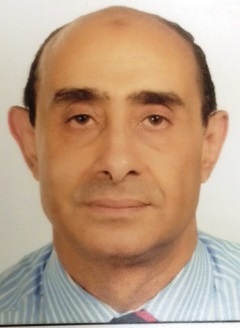
Biography:
Curriculum Vitae Name: Aymen El gendy Nationality: Egyptian Date of birth: 22/11/1959 Social status: Married Tel 009660507364687 Work Experience: *House officer: 1/3/1984 – 28/2/1985 Banha faculty of Medicine *Resident in Department of Dermatology and Venereology 8/3/1985 – 15/4/1989 * Assistant lecturer of Dermatology and Venereology 11/1989 -11/1998 * Lecturer of Dermatology and Venereology 24/11/1992 – 15/6/1998 Banha faculty of Medicine * Consultant of Dermatology and Venereology Alansar Hospital Jeddah 28/11/1993 -25/11/1995 * Assistant Prof. of Dermatology and Venereology Banha faculty of Medicine 7/1998 * Prof. of Dermatology and Venereology Banha faculty of Medicine 10-2003 * Consultant of Dermatology in Saudi airlines Medical services Center Education: * M.B.B Ch. Zagazig university, Banha faculty of Medicine 1983. * M.Sc. Dermatology and venereology , Zagazig university, Banha faculty of Medicine 1988. * M.D. Dermatology and venereology Zagazig university, Banha faculty of Medicine 1992 Professional Experience: *Experience in using laser in the treatment of postacne scars and traumatic scars,tattoos and different types of nevi. *Experience in dermabrasion for treatment of different types of scars. * Experience in lipotransfusion for treatment of depressed scars. * Experience in cryosurgery in the treatment of the skin tumors * Experience in the treatment of Vitiligo,either by PUVA or Melanocyte transplantation (Autologus minigraft) * Experience in the treatment of Vitiligo by micropigmentation. * Experience in correction of wrinkles and scars by collagen injection. * Experience in chemical peeling. Memberships -Member of International Society of Dermatology -Member of Egyptian Society of Dermatology -Member of Saudi Society of Dermatology *High experience in treatment of psoriasis with biologics. *Investigator and speaker of abbovie pharmaceutical. * Investigator and speaker of pfizer pharmaceutical. *Investigator and speaker of janssen pharmaceutical. *Investigator and speakers of MSD pharmaceutical *I have many publications of psoriasis .e.g. **Depression Over Psoriasis: Assessment of associated Reliefby addition of ADalimumab for the treatment of Psoriasis: Observational study (DORADO - Ps) Journal of Dermatology & Dermatologic Surgery 2015 Early online **Management of Psoriasis in Africa and the Middle East: A Review of Current Opinion, Practice and Opportunities for Improvement The Journal of International Medical Research 2011; 39: 1573 – 1588 **Saudi practical guidelines on biologic treatment of psoriasis J Dermatolog Treat, Early Online: 1–7 **B-Endorphin in Psoriasis and its Relation to Disease Activity Med . J .Cairo Univ ., Vol ., 70 , Dec , :65-68 , 2002
Abstract:
Depression in patients with psoriasis : effects of biologics
- Palliative Care Services
Location: 4

Biography:
Assistant professor Greenawalt is a full-time, tenure track faculty member in the department of Nursing and Allied Health Professions, College of Health and Human Services at Indiana University of Pennsylvania. Where she teaches maternity and ethics to undergraduate nursing students. She was the recipient of the 2011 Excellence in Academic Setting Integration of Simulation, sponsored from INACSL, and is a current member of the cohort for Leadership Development Program for Simulation Educators sponsored by the NLN. She currently is serving on the Research Committee for IMSH and INACSL. Her research efforts focus on infusion of meaningful use into academia and curriculum.
Abstract:
The Infusion of Meaningful Use into a Nursing Course and its Relevance to Palliative Care
Wojciech Leppert
Poznan University of Medical Sciences, Poland
Title: The adaptation of the Sheffield Profile for Assessment and Referral for Care (SPARC) to the Polish clinical setting for needs assessment of advanced cancer patients

Biography:
Wojciech has been working as the Chair and Department of Palliative Medicine, Poznan University of Medical Sciences since 1992 as a lecturer and at clinical hospital (Palium Hospice) at the Day Care Center, home hospice, out-patient clinic and at the in-patient unit (on duties). Wojciech had two fellowships in the UK (the Wisdom Hospice in Rochester and the Academic Unit of Supportive and Palliative Care at the Sheffield University). Wojciech serves as a consultant in support palliative care team for several hospitals in Poznan. Since the beginning he is involved in research and undergraduate and postgraduate education. He is the coordinator of palliative medicine program for English-speaking students at the University, and a specialist in palliative medicine, clinical oncology, chemotherapy and also a radiotherapist.
Abstract:
Context and objectives: Assessment of advanced cancer patients’ needs is very important issue in palliative care. The aim of the study was to adapt the Sheffield Profile for Assessment and Referral for Care (SPARC) to the Polish environment and to evaluate its usefulness in needs assessment of patients with advanced cancer. Patients and methods: A forward–back translation of SPARC to Polish was conducted. SPARC was used once in fifty eight consecutive patients with advanced cancer during follow–up. The patients were enrolled from a palliative care unit (25 patients), home care (18 patients) and a Day Care Centre (15 patients). The reliability was evaluated by establishing internal consistency using Cronbach alpha coefficients. Content validity was analyzed based in accordance with Murray’s and Maslow’s theories of needs as a non–statistical method of validity assessment. Factor analysis with principal components extraction and varimax rotation on raw data was employed to reduce the set of data and to assess the construct validity. Results: There were differences regarding religious and spiritual issues, independence and activity between patients staying at the palliative care unit (worse results) and those at the day care centre (better scores). Communication and need for more information items were associated with psychological, social, spiritual and treatment issues. Cronbach alpha coefficients and factor analysis demonstrated, respectively, satisfactory reliability and construct validity of the tool. Conclusion: The study demonstrated that the Polish version of SPARC is a valid and reliable tool recommended for the needs’ assessment and symptom evaluation of patients with advanced cancer.
Sue Hall
National Perinatal Association, USA
Title: Development of Program Standards for Psychosocial Support of Parents of Infants Admitted to a Neonatal Intensive Care Unit: A National Interdisciplinary Consensus Model

Biography:
Dr. Sue Hall earned an undergraduate degree at Stanford University, an MSW from Boston University, and an MD from the University of Missouri-Kansas City, then completed Pediatric and Neonatology training at The Children’s Mercy Hospital in Kansas City, MO. Formerly an Associate Professor of Pediatrics at UCLA’s David Geffen School of Medicine, she has worked as a neonatologist for Pediatrix Medical Group for ten years. Dr. Hall is also the author of a book about life in the NICU, For the Love of Babies, published in June, 2011. She is on the Board of Directors of the National Perinatal Association.
Abstract:
Providing psychosocial support to families who are expected to give birth to an infant with a life-limiting condition, and to parents of infants in the Neonatal Intensive Care Unit (NICU), are essential elements of high quality perinatal and neonatal care, respectively. A primary goal of providing parental support is to ensure that equal attention is given to the healthy functioning of the family as to the medical outcome of the baby. A key component to ensuring the quality of this care is to provide both education and support to the health professionals who work with these families. Yet uniform program guidelines are not present, nor are educational guidelines for health professionals readily available. The National Perinatal Association (NPA) convened a multidisciplinary group of professionals and NICU parents to build consensus at a national level for generating these guidelines. One area of focus was standards for palliative care and bereavement. The team reviewed literature and reflected on current practices in perinatal, neonatal, and community settings during the perinatal period, in the NICU and beyond. A key finding was that many health professionals lacked training in this area and did not know what community resources were available. It was agreed that palliative care and bereavement services should be available to any family whose fetus or neonate is facing a life-threatening condition or imminent death. This type of care requires a commitment to a family-centered integrative approach to perinatal, neonatal, and infant care, as well as knowledge of appropriate community resources.
- Palliative Care
Location: 3
- Palliative Care Services
Location: 4
- Hospice and Palliative Care
Location: 1

Chair
Bert J. Smith
Mountain States Health Alliance, USA

Co-Chair
Jeffrey P. Harrison
University of North Florida, USA
Session Introduction
Lenora Smith
University of Alabama in Huntsville, USA
Title: Do Nurses use evidence-based information to guide desicion making at the end of life?
Time : 11:45 - 12:10

Biography:
Lenora Smith, PhD, RN is an Assistant Professor in the College of Nursing and teaches at the undergrate level and in the doctor of nursing practice program. She has experience in gerontology and home health and her research area focuses on palliative care, end-of-life issues, and interventions for decreasing or alleviating symptoms in individuals with dementia. She is active on several faculty and university committees, as well as several nursing professional organizations.
Abstract:
Artificial nutrition and hydration has become a complex and an ethical issue for the dying. There are confusing opinions as to the whether ANH is of benefit to dying individuals, which results in inconsistent communication by health care providers. In turn, inconsistencies in information from their health care providers result in confusion for the patients and families having to make decisions regarding ANH. These decisions can then increase suffering for the dying individual. Decisions regarding ANH become challenging when the persons making the decisions are not well informed of the consequences or the risks involved, or even the reason why ANH should be initiated or withheld. Todd, Rosendaal, Duregon, & Verhoef (2005) found in their mixed-method study that nurses feel they have a role in the ANH decision-making process, for example as educator. In addition, Pasman, et al. (2004) found that nurses spend more time with the patients than physicians and develop a more trusting relationship with the patients and their families. Evidence shows that nurses lack evidence-based knowledge of ANH and pass these misperceptions and inaccurate information to patients and families, who then make uninformed decisions. This presentation will discuss the evidence of ANH in dying people and how evidence-based information is pertinent to informed decision making for dying individuals and their families. It will address how utilizing evidence-based information can decrease or alleviate more suffering for the dying.
Rita Ferguson
University of Alabama in Huntsville, USA
Title: Patient-Centered Care: The live experiences of nurses providing hospice care
Time : 12:10 - 12:35

Biography:
Rita Ferguson, PhD, RN, Clinical Assistant Professor, College of Nursing is a Certified Palliative and Hospice Nurse and currently teaches in the Undergraduate program and serves as committee chair for selected Doctor of Nursing Practice students. She is also a Certified Nurse Educator. Prior to her role as nurse educator in academia, she worked in multiple areas of clinical nursing. She was a clinical nursing director for a non-profit hospice for 5 years. She received her PhD from Mercer University in 2014 and is currently enrolled at the University of Alabama in Birmingham Geriatric Education Center Faculty Scholar program. Her research focus is nursing end-of-life care and nursing education. She currently is secretary for the North Alabama Hospice and Palliative Nurses Chapter and received the UAH Faculty Award for Excellence, College of Nursing. In May 2015, she received the Georgia Baptist College of Nursing of Mercer University Outstanding Doctor of Philosophy in Nursing Award.
Abstract:
An expected competency of a nurse is to provide patient-centered care. Quality and Safety Education for Nurses (QSEN) defined this competency as recognition of the partnership with the patient in the provision of compassionate care that is coordinated and based on regard for the patient’s desires, values, and needs. The knowledge, skills, and attitudes needed to demonstrate this competency are many. The business aspect of healthcare emphasizes numbers and completion of tasks. There has also been concern regarding the emphasis in nursing education on the science and biomedical knowledge without the inclusion of attentiveness to the individual receiving health care. When questioned regarding their work, nurses often describe the tasks associated with nursing as defining their work. Nursing care is more than tasks. Nursing is comprised of the relationships with the patient and their identified family members, knowledge both scientific and experiential, and the ethical values of the profession. It is important that the work of nurses who work in community hospice settings be visible. A study of registered nurses who worked in hospice agencies expanded insight about their lived experiences of knowing about and caring for patients receiving hospice care and how they provided patient-centered care. This presentation will provide insight to how nurses who work in hospice services delivered patient-centered care. It will offer visibility to the important work of hospice nursing and reveal that more than scientific knowledge is needed to provide patient-centered care in the hospice setting.
Rosalynde Johnstone
Besti Cadwaladr University, UK
Title: Supporting the Spirit of Life: Planning for your death
Time : 12:35 - 13:00

Biography:
Ros manages a range of palliative care projects, the all-Wales Integrated Care Priorities (ICP) for the Last Days of Life, Advance Care Planning and raising awareness, encouraging discussion and planning for death and dying is of particular interest. She has published regularly in peer reviewed journals on various aspects of end of life care as well as giving personal and poster presentations at national and international conferences. She is also interested in identifying the most appropriate methodology for use in clinical trials involving dying patients seeking to establish an evidence base to underpin quality care of the dying patient.
Abstract:
We spend time planning life events, coming of age, marriage, birth, big birthdays and retirement. Planning our dying and death seems to be ignored in today’s culture, despite the inevitability. Having ‘difficult’ conversations with patients or one’s own family members need not be seen as morbid or depressing. Encouraging others to talk about their preferences and priorities at the end of life facilitates planning for the future. Making an advance care plan (ACP) detailing your preferences and sharing this information with those important to you can unburden you allowing you to enjoy the life remaining to you. A pro-forma ACP offers a structured approach to planning which could be useful if you become unable to make decisions for yourself. It offers a range of planning options, guardian ship of loved ones, care of pets, who to contact, where the keys are etc. The document can be altered as circumstances change, with the only proviso that any changes in the document are also conveyed to others with knowledge of your ACP. Your ACP can also incorporate an Advance Decision to Refuse Treatment or ADRT, your tissue or organ donation preferences, details of your Lasting Power of Attorney or LPA as well as any preferences for your funeral arrangements. Knowing that they are fulfilling your preferences after you have died helps those important to you to come to terms with their loss and bereavement. Talking about death and dying, planning ahead and enjoying life—what can possibly be morbid about that?
Ki Mo Kim
Korean Institute of Oriental Medicine (KIOM), Korea
Title: 5, 3’-dihydroxy-6, 7, 4’-trimethoxyflavanone exerts its anticancer and angiogenesis effects through regulation of the Akt/mTOR signaling pathway in human lung cancer cells
Time : 13:45 - 14:10

Biography:
Ki Mo Kim has completed his PhD in 2003 from Kangwon National University in Korea, and Postdoctoral studies from Pittsburgh University School of Medicine. Currently, he is working as a Senior Researcher of Korean Institute of Oriental Medicine (KIOM). He has published more than 25 papers in reputed journals and has been focusing as on “Natural herb-mediated chemoprevention effect and chemotherapy side effects mitigation”.
Abstract:
5, 3’-dihydroxy-6, 7, 4’-trimethoxyflavanone (DHTMF) is one of the constituents of Viex rotundifolia, a medicinal herb that is used for the treatment of various disorders in China and Korea. In this study we evaluated the antitumor and anti-angiogeneic activities of DHTMF. DHTMF significantly suppressed growth and induced apoptosis in lung carcinoma cells in a dose-dependent manner, as indicated by a decrease in Bcl-2 levels and increases in Bax and cleaved caspase-3 levels. In addition, DHTME treatment significantly reduced the phosphorylation of Akt and mammalian target of rapamycin (mTOR), accompanied by reductions in the protein level of hypoxia-inducible factor (HIF-1α) and vascular endothelial growth factor (VEGF), which are key angiogenic molecules in H522 lung cancer cells. Furthermore DHTMF inhibited VEGF-induced angiogenesis, as indicated by reduced expression of CD34, tube formation and migration in human umbilical vein endothelial cells (HUVECs), as well as reduced neovascularization in an in vivo mouse Matrigel plug assay. DHTMF also inhibited phosphorylation of Akt, mTOR, and p70S6K in HUVECs and lung cancer cells. Taken together, our finding indicated that DHTMF inhibits Akt/mTOR signaling and reduces the expression of HIF-1α and VEGF in tumor cells, which in turns inhibits endothelial cell-mediated angiogenesis. These results suggest that DHTMF inhibits angiogenesis as well as induces apoptosis via the Akt/mTOR pathway and might elicit pharmacological effects that are useful for treatment of lung cancer.
Mona Gupta
Cleveland Clinic, USA
Title: Is it time to talk? End-of-life discussions in cancer
Time : 14:10 - 14:35

Biography:
Mona Gupta, MD, is an Assistant Professor of Medicine, Cleveland Clinic Lerner College of Medicine of Case Western Reserve University (CCLCM), Faculty in Palliative Medicine section of the Taussig Cancer Institute and Geriatric Medicine of Medicine Institute at the Cleveland Clinic. She is the Co-Chair of palliative care Special Interest Group at American Geriatric Society, Co-Chair palliative care for Indo American Cancer Association, a charitable organization and Vice- Chair for the Visionary Executive Leadership Team of Elite Women Around the World. She is the Co-Chair of the upcoming Academy of integrative Health and Medicine (AIHM) “Transformative; Health, Wealth and Wellness” conference in October, 2015. She was the Most Valuable Person for Chief of Staff, Cleveland Clinic and received caregiver celebration award for compassionate care of patients.
Abstract:
Breaking bad news is part of the clinical experience of many physicians who care for patients with cancer. It is also important in the end-of-life experience of patients and families. How this information is conveyed may effectively reduce the level of stress and misunderstanding. A family meeting is an effective communication tool for difficult conversations in which potentially bad news is discussed. Special courses have been introduced on how to communicate bad news which connects theoretical aspects (knowledge on com-munication protocols) with practical aspects (skills to interpret and control the body language, express empathy, and knowledge of reactive strategies). One of the strategies helpful in disclosing unfavorable news is called a “Six¬-Step Protocol for Delivering Bad News” or “SPIKES” [Setting, Perception, Invitation, Knowledge, Emotions, Strategy, and Summary]. In this presentation we will discuss the benefits of family meetings, propose a structure for them and discuss skills that can be useful for practitioners. We will apply the SPIKES protocol for end- of- life conversations in patients with cancer using role-play. The purpose would be to develop an insight into unspoken attitudes, thoughts and feelings, which often determine the behavior of others; to enhance communication skills through the interactive discussion; to identify challenges with the communication of prognosis and the breaking of bad news. Candid but compassionate communication between physicians and patients about prognosis is essential to informed decisions about both disease-directed (curative) and palliative therapies.
Ayman El Gendi
Saudi Arabian Airlines Medical Services, Saudi Arabia
Title: Depression in patients with psoriasis: Effects of biologics
Time : 14:35 - 15:00

Biography:
Aymen El Gendy has completed his M.B.B. Ch. from Zagazig University, Banha Faculty of Medicine in 1983. He received his M.Sc. and his M.D. in Dermatology and Venereology in 1988 and 1992 respectively from the same University and Faculty. He is currently the Consultant of Dermatology in Saudi Airlines Medical Services Center. He has published several papers on Psoriasis in reputed journals, for example: “Depression Over Psoriasis: Assessment of Association Relief by addition of Adalimumab for the treatment of Psoriasis: Observation Study (DORADO – Ps) in the Journal of Dermatology and Dermatologic Surgery, 2015, Early Online, and “Management of Psoriasis in Africa and the Middle East: A Review of Current Opinion, Practice and Opportunities for Improvement, in the Journal of International Medical Research 2011; 39: 1573 – 1588”, also “Saudi practical guidelines on biologic treatment of psoriasis, in J Dermatology Treat, Early Online: 1–7. Together with a paper on “**B-Endorphin in Psoriasis and its Relation to Disease Activity in Med . J .Cairo University, Vol ., 70 , Dec , :65-68 , 2002, to name but a few. Aymen El Gendy is a member of the International Society of Dermatology, The Egyptian Society of Dermatology and the Saudi Society of Dermatology.
Abstract:
Psoriasis is a common chronic immune-mediated inflammatory disorder affecting 2–3% of the population. Psoriasis is associated with a variety of psychological difficulties, including poor self-esteem, social stigmatization, anxiety, depression, and suicidal ideation. Psoriasis is associated with substantial impairment of health-related quality of life (HRQOL). Some studies estimated that around one-quarter of patients in dermatology practices have a psychiatric disorder. Significantly elevated concentrations of TNF-α have been observed in the plasma of patients with psoriasis and in patients with major depression. TNF α has been implicated in the pathogenesis of both psoriasis and depression. In humans, administration of TNF-a blockers such as etanercept (Enbrel), infliximab (Remicade) and adalimumab (Humira ) and IL-12/23 inhibitors have been found to improve depression that accompany psoriasis.
Mohammed Abduh Alshaqi
Prince Sultan Military Medical City (PSMMC), Saudi Arabia
Title: Adapting to death, dying and bereavement of geriatric palliative medicine and end of life care
Time : 15:00 - 15:25

Biography:
Mohammed Abduh Alshaqi is a Palliative Medicine Doctor. He did his MBBS from King Saud University 1992/1993, Arab Board of Family Medicine 2001, then Palliative Care from Canada and King Faisal Specialist Hospital & Research Center at 2006 and 2008. He is now a Consultant and Head of Palliative Medicine, division of Oncology Department at Prince Sultan Military Medical City at Riyadh, Saudi Arabia. In addition to that, he is a trainer and external examiner of Palliative Medicine of Saudi Commission for Health Specialties and Acting director of Saudi Society of Palliative Care since 2013 till present. He is a member of many Affiliation and Societies like American Academy of Family Physicians and Saudi Society of Family and Community Medicine since 2001. In addition to that, he is a member of Middle East Academy of Medicine of Aging (MEAMA) since 2003, member of International Association for Hospice and Palliative care since 2006, member of Saudi Oncology Society since 2008, member of Saudi Pain Society since 2009, member of Group on Educational Affairs (GEA) for Medical Education Research Program (MERC) since 2011, and member of Arab Society of Palliative Care since 2014 till present.
Abstract:
Our fear of death and the loss of a loved one are two of the most monumental emotional challenges of human existence. This anxiety is usually suppressed and is only exposed when the reality of a possible death is confronted. Fear of death stems from different sources, for example, the thought of our non-existence and the fear of the unknown of what lies beyond death. Palliative care has recognized the power of this suffering and is concerned with helping people cope and adapt. This is incorporated into a philosophy of care that has resulted in the principles of palliative care. In industrialized and technological societies, death has been removed from the family home into institutions with care provided by professionals. This has resulted in a lack of familiarity with the dying process, which may contribute to a fear of death and dying within society. Death, dying and bereavement challenges the fundamental values and meaning of the human experience. Such a threat has the potential to provoke considerable distress and has therefore interested health professionals. It is important while providing care that we do not lose sight of the individual patient involved and the individuality of each experience of dying, death and bereavement. This presentation will review how to improve the understanding of the processes involved, the damaging consequences that can occur and the role of health professionals in caring for the dying and the bereaved.
Dawn Fairlie
City University of New York, USA
Title: Words and experience matter to surrogates making end of life decisions
Time : 15:25 - 15:50

Biography:
Dawn Fairlie has completed her PhD from the Graduate Center, City University of New York. She is an Assistant Professor and an ELNEC Certified Gerontological Nurse Practitioner. She serves on the board of directors for Halos for Angels, a non-profit organization serving cancer patients in her home community. She is also developing a website, I AM PREPARED TM to assist individuals and families with end of life decision making.
Abstract:
This study investigated the relationship between end of life terminologies and decisional conflict in surrogate decision makers using a convenience sample of 234 adults age 50 and older. Participants were randomized into two groups, and each received a vignette that was personalized. The vignettes varied only in the use of the words “Do Not Resuscitate (DNR)” and “Allow Natural Death (AND)”. The Decisional Conflict Scale (DCS) was administered and demographic data were collected. There was no difference in total DCS score based on AND and DNR versions. However, AND respondents perceived their decision as a good decision, and were eight times more likely to sign the document than DNR participants, indicating that framing influences surrogate decision making at the end of life. Experienced decision makers (EDMs) evolved as a discreet group. They had lower mean total DCS scores and lower mean subscores, indicating that prior experience is an important aspect of end of life decision making. Additionally, AND and EDM participants were more likely to perceive their decision as good and were more likely to be to be sure of their decision, indicating that experienced decision makers respond more favorably to the words Allow Natural Death. The term AND lead to increased likelihood of actually making a decision. Respondents to the DNR version were likely to not sign or postpone signing. Finally, participants were more likely to withdraw from the study when the term DNR was used.
Justin Baker
St. Jude Children's Research Hospital, USA
Title: Walking the line: Ethical decision-making with families at the fringes
Time : 15:50 - 16:15
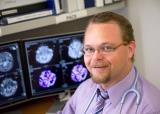
Biography:
As a pediatric oncologist, palliative care physician, member of the ethics committee and Phase I and end-of-life care clinical investigator at St. Jude Children’s Research Hospital, I am intimately aware of the distress experienced by children with advanced cancer and the ethical and end-of-life/bereavement issues surrounding their disease progression. I currently serve as the Chief of the Division of Quality of Life and Palliative Care at St. Jude as well as the medical director of our Quality of Life Service – the St. Jude palliative care team. I also serve as the Director of our Pediatric Hematology/Oncology fellowship program – the largest fellowship program in the state of TN. My research interests include ethical considerations surrounding enrollment in Phase I clinical trials, AYA palliative oncology care, end-of-life decision making, integrating palliative care into the ongoing care of children with cancer as well as pain and symptom control in the context of pediatric oncology care. I have participated in >25 studies related to pediatric palliative care and have authored numerous manuscripts and book chapters on the topics ethical decision making as well as other palliative care subjects within the context of pediatric oncology.
Abstract:
Over the past 100 years medical decision-making in the United States shifted from a paternalistic physician-driven process to a patient-driven autonomy-based standard. Over the past 10-years the pendulum shifted to a balanced meet-in-the-middle approach commonly defined as shared decision-making. Families who listen to all the medical options and select the recommended (standard) option are often perceived to be equal partners. Families that refuse medical recommendations or demand medically inappropriate interventions exist outside of the norm, challenge the communication and shared decision-making skills of clinicians, and may reveal our biases. In this interactive workshop participants will learn the principles of ethical reasoning used when evaluating possible medical neglect or demands for futile or medically inappropriate care. The workshop will provide participants with strategies for communicating with families perceived to be “unreasonable” or at the fringe as well as provide suggestions for reducing the moral distress inherent in these ethically challenging cases. Objectives: 1. Differentiate when parental refusal of a recommended therapy does and does not constitute medical neglect. 2. Recognize when familial requests are demands for futile or medically inappropriate care. 3. Negotiate a treatment plan for families at either extreme using the principles of ethical-reasoning and shared decision-making.
Lesline P Lewinson
Staffordshire University, UK
Title: Student nurses appreciate experiential learning for spiritual care in hospice and palliative care settings
Time : 16:30 - 16:55
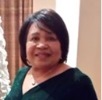
Biography:
Lesline P Lewinson has a special interest in spirituality in healthcare. She is a qualified nurse, midwife, health visitor and nurse lecturer. Accordingly, she has acquired a wide-range of nursing experience in both acute and community settings. During the late 1990’s through a Department of Health funded research project, she was influential in improving primary healthcare access for residents on the Broadwater Farm Estate in London, England. However, for a number of years she was involved in nurse education as a senior lecturer in adult nursing, at the University of Hertfordshire. Presently, she is completing PhD studies at Staffordshire University, looking into the spiritual dimension of holistic nursing care.
Abstract:
Spirituality is subjective, broad, multifaceted, and defies consensus in terms of definition. However, there is recognition that the spirituality influences a patient’s physical and mental health, also their wellbeing and quality of life. Accordingly, spiritual care is considered a part of the nurse’s role and is an integral part of holistic nursing care. However, the nursing profession favours the medical model of health that concentrates on the physical and psycho-social aspects of health care, and for the most part neglects the spiritual. Nevertheless, pre-registration nurse education has a responsibility to adequately prepare student nurses for all aspect of their role, but research shows that matters of spirituality are poorly represented in nurse education and training. While debates continue as to whether spirituality education is more ‘caught than taught’, nurses desire to be better equipped to deliver spiritual care. Therefore, some preliminary findings from a grounded theory investigation provides useful information to show that, student nurses will draw on various resources to enable them to fulfil the spiritual part of their role. In addition, clinical experience in hospice and palliative care environments, seem to provide most useful learning opportunities for students’ understanding and facilitation of spiritual needs.
Semra Aciksozrn
Gulhane Military Medical Academy, Turkey
Title: Palliative care for dying patients: Perceptions of nursing students
Time : 16:55 - 17:20

Biography:
Semra Aciksozrn has completed her master’s degree in 2007 from Gulhane Military Medical Academy, Institute of Health Sciences Fundamentals of Nursing Program. She has completed her PhD from Gulhane Military Medical Academy, School of Nursing in 2012 and Postdoctoral studies from Gulhane Military Medical Academy, School of Nursing. She is working in Gulhane Military Medical Academy School of Nursing as a lecturer. She has published 5 papers in national and international journals and she has authored and coauthored more than 45 abstracts.
Abstract:
Background: Understanding nursing students’ perceptions of dying and palliative care can help educators prepare students for these situations by using the research available to plan better ways to teach students about the needs of the dying patients. Aim: The aim of this study was toidentify the perceptions of nursing students about palliative care for dying patients while on clinical placements. Methods: A qualitative research design was used to obtain data from nursing students who had cared for dying patients during their clinical placements. A total of 15 senior nursing students participated in this study. This study used semi-structured interview guides and unstructured face-to-face dialogue with the participants based on a qualitative method. The data were analyzed based on the phenomenological approach of qualitative methodology. Results: Four categories were identified from the content analysis: feeling of stress and inadequacy; inability to use effective communication skills; symptom management; providing emotional support to family. Most of students in the study reported that caring for a dying patient was a stressful experience, which experienced stress and anxiety related to death, and was not feel competent. Students reported emotional distress and feelings of inadequacy with regard to communicating with patients and supporting the family of the dying patient. Nursing students’ perceptions of palliative care focused on symptom management. Conclusion: These experiences highlight a need for strategies to support nursing students about competence, communication skills and coping with emotional stress. Student nurses need to be prepared to take an active role in caring for dying patients.
- Palliative Care Services
Session Introduction
Susan B LeGrand
Cleveland Clinic, USA
Title: Palliative medicine fellowship: A study of resident choices
Time : 10:30 - 10:55

Biography:
Susan B LeGrand is a Medical Oncologist and Specialist in Palliative Medicine. She is in active practice of both fields. Her residency training was at the University of Texas, Houston and the University of Arizona Cancer Center. She has published numerous articles and spoke widely on palliative medicine topics.
Abstract:
Background: There is no data on the motives or characteristics of physicians choosing fellowship training in Hospice and Palliative Medicine (HPM). Methods: An electronic survey of HPM fellows initiating training in July 2009. Results: Seventy six physicians initiated the study with 62 (82% of responders) completing all questions. Fifty five percent were age 30-40 and 61% were female. Sixty eight percent were non-Hispanic Caucasian, 24% were Asian, and none were African American. Fifty five percent were internal medicine trained. Most (86%) asserted that the care of a dying, critically ill or symptomatic person impacted their decision to enter the field of HPM. Sixty three percent did not feel prepared to manage dying patients and 41% felt personal regret at the care they delivered. The major reasons for choosing the specialty were a desire to contribute to relief of suffering (79%), enhance end-of-life care (73%) and improve communication (78%). Ninety-five percent received negative comments about their career choice. Fifty nine percent had no exposure to hospice or palliative medicine in medical school whereas 61% had an exposure available during residency. Forty seven percent decided to enter fellowship in the 3rd year of residency and 33% applied after practicing in their primary specialty for a median of ten years. Accreditation, strength of education, and a hospital palliative medicine service were required by the majority for selection of a fellowship program.
Jeffrey P Harrison
University of North Florida, USA
Title: Hospice and palliative care: A partnership across the continuum of care
Time : 11:15 - 11:40

Biography:
Jeffrey P Harrison PhD, MBA, MHA is Chair of the Department of Public Health at the University of North Florida. He received his PhD in Health Services Research from VCU, his MBA from William and Mary and his MHA from the Medical College of Virginia. He is a Professor in Health Administration and teaches Strategic Planning. He has twenty-five years’ experience in health care and is an international speaker on a wide range of topics. He has published extensively in the areas of Strategic Planning, Change Management, and Healthcare Technology. He has authored thirty nine professional articles and three book chapters. In 2015, he completed the second edition of his book: “Essentials of Strategic Planning in Healthcare” published by Health Administration Press. He is a Certified Healthcare Executive and a Fellow in the American College of Healthcare Executives. He was selected one of the “Top 100 Health Administration Professors”, in 2013.
Abstract:
In the United States, the population aged 65 or older is projected to increase from 12.4% in 2000 to 19.6% in 2030, or from 35 million to 71 million people. Additionally, those aged 80 or older is expected to increase from 9.3 million in 2000 to 19.5 million in 2030. These growing elderly populations frequently have multiple chronic diseases and will participate in end-of life programs. Hospice and other palliative care providers have multidisciplinary teams working together to provide care. The goals of palliative care are to improve the quality of a seriously ill person’s life and to support that person and their family during and after treatment. Both believe informed patients and families should be encouraged to participate in their plan of care throughout their illness. Given recent changes in the healthcare model, both Hospice and Palliative Care have become a partnership across the Continuum of Care which includes hospitals, outpatient services, home health and post-acute care. This session will incorporate the latest research in Hospice and Palliative as we address the need for partnerships across the Continuum of Care. Specifically, we will discuss the prevalence of hospice and palliative care programs across the continuum of health services. The growth of these programs requires the creation of collaborative relationships between researchers, clinicians and healthcare leadership as process-focused care continues to develop. Our research will show how both facilitate innovation across the continuum of healthcare practice and are a cost effective approach to improving EOL healthcare quality.
Justin N Baker
St. Jude Children’s Research Hospital, USA
Title: Cancer is stressful, but life is too: Integrating palliative care into the ongoing care of adolescent & young adult oncology patients
Time : 11:40 - 12:05
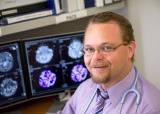
Biography:
Justin N Baker is a pediatric oncologist, palliative care physician, member of the ethics committee and Phase I and end-of-life care clinical investigator at St. Jude Children’s Research Hospital. He currently serves as the Chief of the Division of Quality of Life and Palliative Care at St. Jude as well as the Medical Director of the Quality of Life Service – the St. Jude palliative care team. He also serves as the Director of the Pediatric Hematology/Oncology fellowship program. His research interests include ethical considerations surrounding enrollment in Phase I clinical trials, AYA palliative oncology care, end-of-life decision making, integrating palliative care into the ongoing care of children with cancer as well as pain and symptom control in the context of pediatric oncology care. He has participated in more than 25 studies related to pediatric palliative care and has authored numerous manuscripts and book chapters on the topics ethical decision making as well as other palliative care subjects within the context of pediatric oncology.
Abstract:
Background: Adolescence is a period of increasing independence and the establishment of self with separation from family and emphasis on peer-relations. Cancer complicates the achievement of these developmental norms by requiring adolescent and young adult (AYA) patients to confront the possibility of personal mortality. Survivors diagnosed as AYA have significantly greater psychological distress than those diagnosed earlier in childhood, yet little is known about variables that may contribute to development of negative psychological outcomes during this period of transition and vulnerability. Conclusion: Clinicians working with AYA oncology patients should recognize the importance of comprehensive psychosocial support for this patient population that is focused not only with coping with the cancer diagnosis, but also coping in the setting of other life-stressors that overlay the cancer experience. Lessons learned from caring for this difficult patient population and ways to integrate palliative care will be shared.
Georgann V Weissman
Capella University, USA
Title: Evaluating associate degree nursing students’ self-efficacy in communication skills and attitudes in caring for the dying patient
Time : 12:05 - 12:30
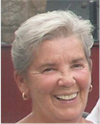
Biography:
Georgann V Weissman completed her DNP from Case Western Reserve University and has a Post Master’s Certificate as a Geriatric Nurse Practitioner from Binghamton University. She has combined academia with clinical practice focusing primary care on the elder adult and their needs at the end of life. She is presently a part time faculty at Capella University.
Abstract:
It is vital that a curriculum provides nursing students with the skills and confidence to meet the health care needs of society. Clear communication is an essential skill for all nurses and some areas of communication are more challenging for both students and educators. Communication regarding end of life (EOL) is perhaps the most challenging because of our death-denying culture and discomfort with this topic. There is one curriculum, The End of Life Nursing Education Consortium (ELNEC), studied at the graduate level; however, this program has not been implemented at the associate degree level. ELNEC is comprised of nine teaching modules that enhance knowledge, attitudes, and skills by using the cognitive, affective, and psychomotor domains of learning. This study is focused on the sixth teaching module: communication. Employing a pretest, post-test quasi-experimental design this researcher planned didactic content related to EOL to two groups of first year nursing students. Both groups used a common nursing curriculum at two demographically separate campuses of the same university. The intervention group also received the ELNEC communication module. Tools used for collecting information focused on any change(s) in self-efficacy and/or attitudes. Each participant completed the Visual Analog Scale (measuring self-efficacy) pretest and posttest intervention, as well as the from melt Attitudes Toward Care of the Dying Scale. The results of this pilot study provided positive outcomes similar to studies completed with the ELNEC curriculum at the graduate level. It also added the measure of self-efficacy in communication with the dying patient, which is new to the research in this area.
Julia A Greenawalt
Indiana University of Pennsylvania, USA
Title: The infusion of meaningful use into a nursing course and its relevance to palliative care
Time : 12:30 - 12:55

Biography:
Julia A Greenawalt is a full-time, tenure track faculty member in the Department of Nursing and Allied Health Professions, College of Health and Human Services at Indiana University of Pennsylvania, where she teaches maternity and ethics to undergraduate nursing students. She was the recipient of the 2011 Excellence in Academic Setting Integration of Simulation, sponsored from INACSL, and is a current member of the cohort for Leadership Development Program for Simulation Educators sponsored by the NLN. She currently is serving on the Research Committee for IMSH and INACSL. Her research efforts focus on infusion of meaningful use into academia and curriculum.
Abstract:
Teaching documentation skills and concepts to the emerging professional is a new challenge for nurse educators as the infusion of meaningful use is implemented within nursing’s affiliating agencies. Discipline mandates and accreditation requirements expect the emerging professional to be current in technology and communication as one prepares to care for patients in contemporary times. The purpose of this instructional opportunity was to examine issues contributing to the successful learning of electronic documentation within an undergraduate nursing course in western Pennsylvania. This presentation will address one approach to infusing documentation skills into an obstetrical clinical experience, share lessons learned, and discuss gaps that have been revealed in the teaching learning of meaningful use into higher education. Current inquiry and future research into evidence-based practice is needed as preparation gears toward workforce ready graduates who will be skilled and adept at documentation using current technologies. Teaching skills for information systems, particularly the electronic health record requires identification of challenges and obstacles which can be surmounted if academy and corporate culture work in tandem.
Lisa Gallagher
Cleveland Clinic Arts and Medicine Institute, USA
Title: The effects of music therapy interventions on symptom management in palliative medicine patients
Time : 13:55 - 14:20

Biography:
Lisa Gallagher, MA, MT-BC is the Manager, Music Therapy for the Arts and Medicine Institute at Cleveland Clinic. She is an administrator, clinical music therapist, author, and researcher. She is a frequent presenter at local, national, and international levels, and she has published several articles and book chapters. In addition, she is the recipient of the 2007 Great Lakes Region of the American Music Therapy Association Scholarly Activity Award, the 2008 Blair L. Sadler International Healing Arts Award, and the 2013 Association for Ohio Music Therapists Past Presidents Club Award. She is the former Chair of the Certification Board for Music Therapists’ Board of Directors, and she currently is the immediate Past President of the Great Lakes Region of the American Music Therapy Association.
Abstract:
The purpose of this study was to understand the impact of music therapy sessions on pain, anxiety, shortness of breath, depression, and mood; to identify specific interventions that are effective and common in addressing these symptoms; and to investigate the effects of gender, age, and type of cancer in patients with pain and anxiety who experienced music therapy. This was a retrospective study of data obtained over an almost 12 year timespan. A total of 5,970 records were included in the database representing 1,570 patients. The data file utilized for this study represented 547 patients whose initial music therapy sessions contained documentation of at least one variable. Among the 547 patients, 293 had complete data on all outcomes measures and were included in the data analysis. This study demonstrated the importance of music therapy for addressing symptoms and behaviors of palliative medicine patients. There was a positive and statistically and/or clinically significant effect on pain, anxiety, depression, shortness of breath, mood, facial expression, and verbalization. Commonalities regarding which interventions were most commonly used to address each symptom; as well as trends as to which interventions were most effective in addressing these symptoms were identified. Results also include connections between the effect on change in each of the variables as compared with age, gender, diagnosis, goals, and interventions.
Dawn Peleikis
Akershus University Hospital, Norway
Title: Effectiveness of one year pharmacotherapy of adults with attention-deficit hyperactivity disorder (ADHD): An open-label prospective study of treatment time, dose, side-effects and comorbidity
Time : 14:20 - 14:45

Biography:
Dawn Peleikis in 1994, started as a resident in psychiatry. She became an authorized psychiatrist in 1999. She completed her education in psychotherapy at the Norwegian Institute of Psychotherapy. In 2000-2004, she did her PhD work and her dissertation was on “Women who were sexually abused as children: Aspects and functioning after therapy”. From 2005 she worked both on clinical and research associated to Department of Research and Development, Department of Psychiatry, Akershus University Hospital. Her topics of research have been: trauma/PTSD, Schizophrenia and ADHD. She was the main supervisor in the PhD work of MD Fredriksen and is doing effectiveness study on adult ADHD-patients.
Abstract:
The aim of this study was to examine clinical relevance of long-term medication of adult ADHD. Electronic databases reviewed for original studies of long-term pharmacotherapy suggested that medication leads to less symptoms and higher functional outcomes compared to non-treatment and was well tolerated. However, the literature was scarce and had limitations in generalizing the outcome to the ADHD patients in general. The original studies of the thesis were conducted on 250 medication-naïve adult ADHD-patients at a specialized outpatient clinic. Higher levels of childhood hyperactive-impulsive symptoms and overall severity of ADHD-symptoms were associated with educational failure. Persisting inattentive symptoms and co-morbid mental disorders in adulthood were related to long term work disability. In the observational prospective part of the clinical study patients were treated with current ADHD-medication. At 12-months follow-up 232 patients completed examination, and 70% persisted on medication. Sustained improvement of symptoms and functioning were related to continued medication. Co-morbid mental disorders and side-effects were related to lower effectiveness and adherence. Hyperactive-impulsive ADHD-symptoms and severity of ADHD-symptoms in childhood was related to not having completed secondary school. Sustained attention difficulties in adulthood and comorbidity of psychiatric disorders were related to long-term work incapacity. Maintained use of ADHD medications was associated with significant reduction of ADHD-symptoms, improvement in general functioning and psychological symptoms. No serious adverse events were recorded.
Mary Goggin
St. George’s University Hospitals, UK
Title: The tension between the desire to sustain life and the acceptance of death
Time : 14:45 - 15:10

Biography:
Mary Goggin works as a Practice Educator at St. George’s University Hospitals, NHS Foundation Trust in London, UK. She has lead responsibility for the training and continuing education of staff new to specialty. She has devised a university Work Based Learning programme to ensure consistency in knowledge and clinical standards. Areas of research include the impact of continuing professional knowledge and competence and loss of a twin. She completed her PhD from University of Brighton. She has presented national and international conferences and is a reviewer of reputed journals.
Abstract:
Palliative care for (fetus, neonate or infant) with life threatening conditions is an active and total approach to care, from the point of diagnosis or recognition, throughout the child’s life, death and beyond. It embraces the physical, emotional, social and spiritual elements and focuses on the enhancement of quality of life for the (neonatal infant) and support for the family. It includes the management of the distressing symptoms (provision of short breaks) and care through death and bereavement. Palliative care requires a holistic approach by the multidisciplinary team who care for the neonate and his/her family. Palliative care planning involves professionals from midwifery, fetal medicine, obstetric, neonatal, community and children’s hospice service, and families. Care provision may vary up until the end of life and there may be transition into and out of active supportive and end of life care. The transition from active care for the neonate to palliative care involves an emotional journey for parents and family. The focus of this talk is on the resultant tension between the desire for life and the acceptance of death. Where death occurs within a short time frame there may be little time for parents to process the events and the accompanying emotional journey. Parents require time to process the events, the death of their baby and the assimilation of the new reality. Bereavement follow-up and counselling support need to be timed to coincide with the parents’ requirements.
Christos Stefanou
Athens University, Greece
Title: The Rising Role of Electrical Muscle Stimulation in Acute Disease and Rehabilitation Established applications and Research
Time : 15:10 - 15:35

Biography:
Christos Stefanou has completed his MD degree in Athens, Greece; trained in Internal Medicine in the USA and Cyprus; and completed his fellowship of Intensive Care in Greece. He is a doctorale candidate and a researcher, studying the beneficial and regenerative effects of Electrical Muscle Stimulation in ICU. He is currently an ICU attending of Limassol General Hospital of Cyprus.
Abstract:
Electrical muscle stimulation (EMS) is an alternative form of exercise for individuals who cannot fully participate in physical therapy. Furthermore, there are numerous sequels that derive directly or indirectly from stimulating muscle tissue. These may be local or systematic, involving all body systems; yet related present knowledge is in its infancy –even in the case of exercise, about which much more is known. EMS exerts pleotropic effects and emerges as a basic, indispensable treatment modality in several fields of medicine for highly morbid conditions, such as, sarcopenia, venous thrombosis, pressure ulcers, pelvic floor dysfunction, or muscle re-education. Technical parameters of the application define the outcomes. There has been recent attention to the regenerative effects of EMS, which are of axial importance to people who suffer from acute or chronic diseases or conditions. Regeneration may be evidenced through the release of anabolic factors or mobilization of progenitor cells. Six FDA- approved general areas of the application and many more, increasingly supported in literature, are reviewed; and own research is presented, focusing on progenitor cell mobilization and safety.
Soyannwo O A
University College Hospital, Nigeria
Title: Palliative care: Supporting adult cancer patients in Ibadan, Nigeria
Time : 15:35 - 16:00
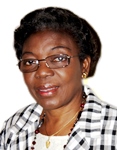
Biography:
Soyannwo O A is a Professor of anaestheisa and Consultant anaesthetist. She obtained the MBSS degree from University of Ibadan, Medical school in 1971, She had her Post-graduate specialist training at the University College Hospital, Ibadan, Royal College of Surgeons, London, Royal Liverpool Hospital, Great Ormond Street Hospital for Children, London, Walton Centre for Neurology and Neurosurgery, Liverpool Marie Curie Centre (Hospice), End of life Observatory Lancaster University and Hospice Africa, Uganda. She rose through the academic ladder and was promoted to Professor in 1998. Her areas of scientific research interest include pain and palliative care, paediatrics anaesthesia and manpower development. She has published over 100 scientific articles and supervised several postgraduate students. She is currently the leader of the Ibadan Hospice and palliative care group bringing relief and succour to adults and children with chronic illnesses including end of life care and support for their families. She has received several awards including the honorary Fellowship (the highest award) of the international Association for the study of Pain for her immense contributions to pain management, education and research in Africa.
Abstract:
Introduction: Over 70% of adult cancer patients present late to hospital in Nigeria with devastating consequences. Yet, structured palliative care is only an emerging service in this country with population of over 160 million. Objective: To describe activities of the Ibadan palliative care group and review one year holistic care programme offered by the team to support patients and their families. Methodology: A retrospective study reviewed treatment notes of patients that were enrolled from January to December 2013. Information retrieved included bio-data, stage of cancer, presenting complaints, palliative care issues identified, services rendered, days on programme, outcome and challenges. Results: Structured palliative care service consisting hospital based care, day care and home based care commenced in 2008, being the first of such in Nigeria. The service was based at the University College Hospital, Ibadan and run in collaboration with Centre for Palliative care Nigeria, a non-governmental organization. 189 patients were seen within the year and 121 (64 %) were adults with advanced cancer. There were 44 (36.4%) male and 77 (63.6%) female with age range 21 to 91 years. 89 (73.6%) had moderate to severe pain. Psychosocial issues were present in 51.2% and spiritual issues in 17.4%. Services that were offered despite major challenges of late referral and financial constraints provided pain and symptom control, counselling, education for patients and family, financial and spiritual support thus improving quality of life Conclusion: Patients and their families found that palliative care provided relief to pain and suffering. More can be achieved through training of more health professionals, increased public awareness of the services and government support.
Beatrice Matandiko Zulu
General Nursing Council of Zambia, Zambia
Title: Effectiveness of palliative health care services for women and men in the client population
Time : 16:20 - 16:45

Biography:
The major causes of inequality in the health care systems are gender differences and inequalities because women and men play different roles in society. For example, in addition to the different gender specific diseases, women often have less direct access to resources and are often less able than men to take measures to protect themselves against certain diseases (ADBG 2009). The difference in roles played by men and women also impact who takes care of the sick and the elderly at home or in health facilities. Available evidence shows that women wait longer than men to seek medical care partly due to their unwillingness to disrupt household functioning until they become incapacitated. Therefore, gender disparities in the use of health services, health status and access and in health outcomes persist, signifying a need to address gender inequality in palliative health care services. The purpose of the desktop review is to provide the health sector evidence to facilitate effective analysis and identification of the gender issues in the provision of palliative care services and for effective gender analysis and mainstreaming in palliative care service provision. The results should be helpful to demonstrate good practices in mainstreaming gender in palliative care. One of the principles of palliative care is that it is applicable early in the course of illness, in conjunction with other therapies intended to prolong life (ARVs, chemo-radiation) and investigations needed to better understand and manage distressing clinical complications (WHO, 2002). Presently, in Zambia, palliative care services are offered to cancer patients.
Abstract:
Beatrice Matandiko Zulu, GNC Education and Training Manager, coordinates nursing and midwifery education and training programmes and ensure integration of core competencies into nursing curricula. Prior to joining GNC, she was Principal Tutor for Lusaka School of Midwifery and later briefly as Nursing Education Manager for Lusaka schools of nursing and midwifery. She received both her Master in Gender and BSc degree from the University of Zambia. She was a co-investigator in a research paper that was published in the International Journal of Nursing Education Scholarship manuscript 2379 in 2012.
Justin N Baker
St. Jude Children’s Research Hospital, USA
Title: Rescuing KR 1 and 2 Harnessing hospital and community hospice interdisciplinary care team resources to improve quality of care and quality of life for a complex patient
Time : 16:45 - 17:10
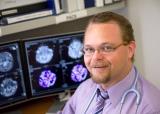
Biography:
Justin N Baker is a pediatric oncologist, palliative care physician, member of the ethics committee and Phase I and end-of-life care clinical investigator at St. Jude Children’s Research Hospital. He currently serves as the Chief of the Division of Quality of Life and Palliative Care at St. Jude as well as the Medical Director of the Quality of Life Service – the St. Jude palliative care team. He also serves as the Director of the Pediatric Hematology/Oncology fellowship program. His research interests include ethical considerations surrounding enrollment in Phase I clinical trials, AYA palliative oncology care, end-of-life decision making, integrating palliative care into the ongoing care of children with cancer as well as pain and symptom control in the context of pediatric oncology care. He has participated in more than 25 studies related to pediatric palliative care and has authored numerous manuscripts and book chapters on the topics ethical decision making as well as other palliative care subjects within the context of pediatric oncology.
Abstract:
Introduction: Interdisciplinary care teams are an essential part of quality care and communication in the delivery of both hospital and home based palliative care services. Optimal care coordination utilizes the collective expertise of care providers across disciplines and care settings to meet the physical, social, emotional and spiritual needs of their patients. One year ago we began the QoLA Kids (Quality of Life for all Kids) program; a home based palliative care and hospice bridge program formed as a collaborative effort of St Jude Children’s Research Hospital, LeBonhuer Children’s Hospital and Methodist Hospice. Biweekly interdisciplinary care team meetings bring together doctors, nurses, social workers, chaplains, child life specialists, and others, to enhance communication and quality of care for enrolled patients. The program has enabled the provision of essential care and resource utilization at a level that were previously unattainable. Case Report: KR is a 16 year old boy with perinatal HIV, developmental delay and progressive metastatic lyomyosarcoma with chronic issues of pain and failure to thrive. KR has been in the custody of his maternal aunt since the death of his mother and has had issues with poverty, recurrent homelessness, school truancy, and medical neglect. The palliative care team was consulted to augment the support of hospital based services and enrolled in the newly formed QoLA Kids program. Home visits by care providers across disciplines revealed an extremely unsafe environment, narcotic diversion with untreated pain, neglect of basic care including enteral feeds, medication non-compliance, and patient anxiety and emotional distress leading to self-mutilation. Through interdisciplinary expertise and communication, the team was able to address the identified deficiencies in KR’s care and improve both his safety and quality of life in ways that would have not been possible without the QoLA Kids program. Case report Part 2: He was followed on the program for over a year during which time he and his family required intensive psychosocial and medical support. On a routine home hospice visit, he was found to be unresponsive and brought to the local emergency room at LBH. Rapid communication between the QOLA hospice nurses, palliative care teams at both hospitals, and KR’s legal guardian allowed the team to clarify goals of care leading to revocation of the previously signed DNR/DNI. KR was intubated and aggressively treated for presumed reversible causes. Following acute care treatment at both hospitals, he was transferred to the Methodist hospice residence for rehabilitation and while awaiting DCS custody decision. He fully recovered from his acute illness and was recently discharged from hospice given ongoing clinical improvement and stabilization of his chaotic social situation. Discussion: The case of KR illustrates how interdisciplinary care across care settings can dramatically improve quality of care and quality of life for complex patients.
Lisa Gallagher
Cleveland Clinic Arts and Medicine Institute, USA
Title: Surveys of families of hospice and palliative medicine patients who experienced music therapy
Time : 17:10 - 17:35

Biography:
Lisa Gallagher, MA, MT-BC is the Manager, Music Therapy for the Arts and Medicine Institute at Cleveland Clinic. She is an administrator, clinical music therapist, author, and researcher. She is a frequent presenter at local, national, and international levels, and she has published several articles and book chapters. In addition, she is the recipient of the 2007 Great Lakes Region of the American Music Therapy Association Scholarly Activity Award, the 2008 Blair L. Sadler International Healing Arts Award, and the 2013 Association for Ohio Music Therapists Past Presidents Club Award. She is the former Chair of the Certification Board for Music Therapists’ Board of Directors, and she currently is the immediate Past President of the Great Lakes Region of the American Music Therapy Association.
Abstract:
Music therapy is effective in aiding in symptom management and quality of life for palliative medicine and hospice patients. Most studies have looked at patients, while only a few addressed the needs of family members. The purpose of this study was to understand family members’ perceptions of music therapy when they had a relative in palliative medicine or hospice. Quantitative results are combined with qualitative comments and reactions. Data was available on 50 participants. Patients scored their symptoms (pain, anxiety, depression, shortness of breath, mood) before and after music therapy sessions. One family member who was present during the session was asked to assess the effect on the patient’s pain, anxiety, depression, shortness of breath, stress level, restlessness, comfort level, mood, quality of life; the effect on self for stress level, quality of life, and mood; the helpfulness of the music therapy session to the patient and to self; and if they would recommend the patient have another music therapy session. Results indicated that music therapy helped to improve patient symptoms and it helped family members to experience its effects and to perceive positive effects for the patient. This study is one of the first to investigate the effects of music therapy on family members, as well as their perception of the effects of music therapy on their loved. Although this will be an important addition to the literature, it is recommended that more research should be conducted on the benefit of music therapy for family members.
Kathleen Jablonski
University of St. Catherine, USA
Title: New models of care: Using storytelling as a way to better understand cancer survivor's needs
Time : 17:35 - 18:00

Biography:
Kathleen Jablonski will complete her Doctorate of Nursing Practice in Transcultural Leadership from Augsburg College in May 2015. She is a Professor of Nursing at the University of St. Catherine in St. Paul, MN and practices oncology as a Clinical Nurse Specialist at Optum Health. Her lifelong work with cancer patients and cancer surivors has been presented in a variety of forums from survivor support groups to national organizations.
Abstract:
The reality of oncologic illnesses obliges those of us in healthcare to consider the paradox of living life while preparing for death or conversely living when the struggles make the thought of death come as a welcomed guest. It is within this chaos of illness where the rhythm of the universe lies. This is the state of the sacred that leads to an expanding awareness of healing and wholeness. The patient and the healthcare practitioner join in a story of each other—we become parts of each other’s story. By fostering the richness and depth of stories and by looking beyond the lens of nursing and medicine this project uses storytelling to form a picture of how the needs, and ultimately the decisions the individual makes, shape the patterns of the group. Likewise, story telling is a way to learn of the "problematics" that too often go "un-narrated. When we begin to hear through the filter of cultural conformity and the social structures which embrace—or constrain—the person living with cancer we create new ways of healing. This project explores the emic wisdom of the storyteller and can be used in practice and in teaching. Acknowledging that when one steps beyond the boundaries of our profession we can explore the needs of populations more fully. In practice, it is a therapeutic model to create a sacred space to heal. As a teaching model it is used as a foundation to educate students about all ways of knowing.
- Pain Management
Location: Narita
Session Introduction
Pamela V O Neal
University of Alabama in Huntsville, USA
Title: Palliative Practices to promote airway clearance
Time : 10:00 - 10:25

Biography:
Pamela V O'Neal, PhD, RN is Associate Professor of College of Nursing. She teaches the undergraduate and the doctor of nursing practice programs. She has a research focus in assessing suctioning processes to improve patient outcomes and is Co-Director of the Clear Project. She has experience in both laboratory and clinical research related to suctioning with newborns, adults, and older adults. She is Past-President of the North Alabama Chapter of the American Association of Critical Care Nurses, Chair of the Institutional Review Board for UAH, and was recognized as the Outstanding Faculty in the College of Nursing.
Abstract:
Palliative care addresses pain and suffering across the lifespan with any type of illness and is inclusive of all age groups. National Hospice and Palliative Care Organization (NHPCO) estimated as many as 1.5 million patients in 2013 received hospice services. The largest population of hospice services were mostly female (55%) and age 85+ (41%); however, 0.4% were less than 24 years, which indicates young adults, children, and infants. The top non-cancer diseases requiring palliative services were dementia (15%), heart disease (13%), and lung disease (10%), and all these diseases involve sequelae associated with dysphagia, dyspnea and respiratory compromise. Oral secretion accumulation and viscous secretions contribute to pulmonary distress. Oral secretions can migrate to the pharyngeal area and transit to the lower airways contributing to pneumonia. Oral secretion removal is critical; especially when someone at the end of life is no longer able to functionally manage their own secretions. The viscosity of oral secretions can influence secretion removal. Current research involves the design and fabrication of a microfluid viscometer to assess viscosity of oral secretions in order to effectively evacuate these secretions. Removal of viscous and non-viscous oral secretions promotes effective airway clearance, relieves deleterious effects of poor oxygenation, and provides comfort support though manual secretion removal with a soft-tipped suction device. The purpose of this presentation is to focus on integrating palliative care practices to assist children, adults, and older adults in promoting airway clearance, managing respiratory compromise, and providing supportive pulmonary care at the end of life.
Malhotra S K
Post Graduate Institute of Medical Education and Research, India
Title: Transdermal approach to pain relief: Present and future
Time : 10:25 - 10:50

Biography:
S K Malhotra completed MD (Anaesthesia) from Postgraduate Institute of Medical Education and Research Chandigarh (PGIMER), India. Presently he is designated as Professor, Department of Anaesthesia and Intensive Care, PGIMER, Chandigarh, India. He was a Past President of Indian chapter of International Trauma Anesthesia and Critical Care Society and Member of several scientific societies related to Anaesthesia and on Editorial Board of three Anaesthesia and Critical Care journals. He has published about 104 scientific papers in both national and international journals. He was the examiner and expert to 8 universities as well as National Board of Examination. He has special interests in airway management, acute pain services and trauma.
Abstract:
The management of chronic and acute pain relief has always been a challenge for the anaesthesiologists. One of the various modalities of pain relief is transdermal approach. The goals of transdermal pain relief are; firstly, to deliver local concentrations of medication higher than possible through the oral or parenteral routes; secondly, to reduce side effects and drug interactions through avoidance of systemic absorption and renal and/or hepatic exposure. There are various advantages of pain relief through transdermal approach. There are minimum GI upsets with drugs such as opioids and NSAIDS, action is local and site specific, easy to titrate for an individual patient, rapid onset of action and high concentration of the drug in the tissues that requires analgesia. Moreover, transdermal is the perfect route for nil per os patients. Transdermal medications are ideal for conditions like postoperative pain, osteoarthritis, musculoskeletal pain, localized or acute Injury, diabetic neuropathy, neuropathic pain and fibromyalgia. More stress is being laid on efficacy and safety of the transdermal delivery. Also, more precise drug delivery, with duration lasting for longer days are being investigated.
Jean Paul Rwabihama
niversity of ParisÂEst Creteil and Geriatric, France
Title: Rights of elderly patients at the end of life: The French experience
Time : 11:05 - 11:30

Biography:
Jean Paul Rwabihama is a Medical Doctor in internal medicine from University of Rwanda and Specialist in Geriatrics after 5 years of training in Paris. He received Master of Science in Eleventh Law at Paris 7 University and completed his PhD in HICS and Public Health at the Het Toulouse University (France). He was a PhD fellow at the Kennedy Institute of Ethics of Georgetown University (USA). Currently, he is a Senior Consultant in Geriatrics at Paris Public Hospital (APHP) and Researcher at the Clinical Epidemiology and Ageing Unit, at University of ParisEst Creteil.
Abstract:
The management of terminally ill patients has been improved by the accessibility of palliative care since 1999 in France. The relatives or loved ones were therefore allowed to assist the dying patient until the end. The Kouchner law adopted in 2002 has established the informed consent process but the most important regulation is the Leonetti law. The law of 2005 concerning the rights of patients at the end of life permits with-holding and withdrawing of treatment for patient at the terminal phase with some limitations such as few highly publicized individual situations. During the past 5 years, the debate about legalization of euthanasia and physician assisted suicide came up to public through media in France. Several national institutions expressed their opinions and official assessments of the Leonetti law revealed a misunderstanding of its spirit among healthcare providers. French population was also unfamiliar of this law published almost 10 years ago. According to the recent Parliament reports, the legislator plans to strengthen this law and then advance directives will become binding in France. This project raises several ethical issues among healthcare providers, such as burnout, especially for those who working in palliative care setting, hospice and long term care department. As it is well recognized, the culture of palliative care is not rather implemented in France, death is still a society's final taboo and continuing medical education has an important role in extending palliative care in order to improve quality care at the end of life for elderly.
Nasreen Panjwani
Aga Khan University, Pakistan
Title: Physicians’ and nurses’ perspectives on the importance of advance directives in tertiary care hospitals of Karachi
Time : 11:30 - 11:55

Biography:
Nasreen Panjwani has completed her MSc in Nursing from the Aga Khan University School of Nursing and Midwifery, Karachi, Pakistan. She is currently working as a Nurse Manager for surgical areas at the Aga Khan University Hospital, Karachi. Her past experience is of an RN in different critical care areas such as the Emergency Department and Post Anesthesia Recovery Room. She has also worked at the Aga Khan University School of Nursing and Midwifery, Karachi, Pakistan as a Senior Instructor. She has published one article in a reputed journal.
Abstract:
This study explores the physicians’ and nurses’ understanding about Advance Directives (ADs) and identifies their perspectives on its importance, in the context of Pakistan. An exploratory descriptive method was adopted and a purposive sample, consisting of six physicians and seven nurses, was selected from two tertiary care hospitals in Karachi. Data was collected from participants, using a semi structured interview guide and was coded and categorized manually. Analysis of data led to four categories, such as roles of physicians and nurses in the end of life care, challenges they faced while taking end of life care decisions; their perspectives about ADs, and the scope of acceptability of ADs in Pakistan. This study revealed that patients’ families and physicians usually take decisions for patients’ end of life care. Majority of participants acknowledged the usefulness of ADs. However, they explicated some issues that may be faced in implementing ADs, particularly the issue of non-disclosure of diagnosis to the patient in the culture of Pakistan, concerns about the tedious legalization process involved, and the problem of forged documents. Participants recommended the establishment of palliative care services before the execution of ADs. This study indicated viability of ADs; however, a wider exploration would be required in terms of study population. Furthermore, reforms to support this concept would be required in systems, structure, legal policy, and training of health care professionals. Besides these transformations, promotion of public education about the advantages of ADs could enhance their acceptability among the general population.
Gonul Kurt
Gulhane Military Medical Academy, Turkey
Title: Ethical decision-making practice of nursing students in end-of-life care
Time : 11:55 - 12:20

Biography:
Gonul Kurt R N has completed her Master’s degree in 2007 from Gulhane Military Medical Academy, Institute of Health Sciences Obstetrics and Gynecologic Nursing Program. She has completed her PhD from Gulhane Military Medical Academy, School of Nursing in 2012 and Post-doctoral studies from Gulhane Military Medical Academy, School of Nursing. She is working in Gulhane Military Medical Academy School of Nursing as a Lecturer. She has published 8 papers in national and international journals and she has authored and coauthored more than 48 abstracts.
Abstract:
Background & Aim: Ethical problems in Intensive Care Units (ICUs) are common, especially when caring for patients at the end of life. Thus, medical professionals who work in ICUs must have the ability to analyze, evaluate and make decisions in ethical issues that are relevant to their duties, making use of ethical theories and principles. We aimed with this study to determine the ethical decision-making practice of nursing students about end-of-life care in ICU. Methods: This descriptive study was carried out between January-June 2015 with nursing students who work with dying patients in ICU. The study sample consisted of a total of 87 student nurses. The data in the study were collected using the Data Collection Form, and Nursing Dilemma Test (NDT) to determine the ethical decision-making level of the students. The study data were analyzed with SPSS for Windows V.15.0. The independent sample t-test was used for the statistical comparison of the data. A p value of <0.05 was regarded as statistically significant. Results: Most of students (94.3%) stated that they faced with the dying patients during clinical applications for the first time. Students stated that they often felt sadness (86.2%) while caring the dying patients. Most of the students (58.6%) think that the aim of end-of-life care is relieved pain of dying patients. The Nursing Principled Thinking level (48.57±5.66) was above average, while Practical Considerations level (16.78±3.03) was nearly at the level of average. These findings showed that students notice to decide taking into account the ethical principles if there is any ethical issues and students who decide ethical issues take into account environmental factors, relatively. It was found that nurses were familiar to the similar nursing dilemmas (16.79±2.25). While deciding about ethical issues, the students who have experienced the death of a person from the family had significantly lower take into the account of environmental factors than the others (p<0.05). Conclusion: We found that nursing students respectively notice to decide taking into account the ethical principles and environmental factors while decide any ethical issues.
Camelia Rohani
Shahid Beheshti University of Medical Sciences, Iran
Title: The role of sense of coherence, spirituality and religious coping as predictors of HRQoL during 12-month after pre-diagnosis of breast cancer
Time : 12:20 - 12:45
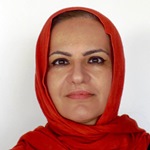
Biography:
Camelia Rohani completed her MSN in community health nursing at the Iran University of Medical Sciences. Her doctoral education in nursing was completed in 2012 at the Karolinska Institute, Stockholm, Sweden. Her dissertation focused on the Health-Related Quality of Life in women with breast cancer in Iran, with an emphasis on the psychometrics of various instruments and clinical study. Presently she is teaching nursing and doing research focusing on the sense of coherence at Shahid Beheshti University of Medical Sciences in Tehran.
Abstract:
When measuring HRQoL in cancer patients, determining inner resources like sense of coherence (SOC), spirituality and religious coping is important. SOC has received a great deal of attention in healthcare research in recent years. It is defined as an individuals’ global view of life, based on how comprehensible, manageable and meaningful life appears to them. This study investigated the predictors of HRQoL dimensions at the 12-month follow-up in a sample of Iranian women with breast cancer. The results showed that, after controlling for demographic variables and baseline ratings of HRQoL dimensions, the SOC is the most important predictor of HRQoL changes during the 12-month follow up, predicting almost all dimensions of HRQoL. Spirituality and religious coping were non-predictors, maybe depending on the scales used, which will be discussed. This underscores that the degree of SOC as an overall view of life and coping capacity, may be more important than spirituality and religion, as a general predictor for HRQoL changes. These results support the importance of collecting data concerning HRQoL and SOC together early at the pre-diagnosis period of breast cancer and during follow-ups. Gathering SOC and HRQoL data can assist in early detection of women who may be at greater risk for HRQoL impairments and have a lower ability of psychological adaptation to disease and treatment. Nurses and clinicians should consider the concept of SOC as a potential pathway for successful management of individualized care plans in early palliative care in breast cancer patients.
- Hospice Care
Location: 1
Session Introduction
Susan B LeGrand
Cleveland Clinic, USA
Title: Palliative Medicine Fellowship: A Study of Resident Choices

Biography:
Dr. LeGrand is a medical oncologist and specialist in Palliative Medicine. She is in active practice of both fields. Her residency training was at the University of Texas, Huston and the University of Arizona Cancer Center. She has published numerous articles and spoke widely on palliative medicine topics.
Abstract:
Background: There is no data on the motives or characteristics of physicians choosing fellowship training in Hospice and Palliative Medicine (HPM). Methods: An electronic survey of HPM fellows initiating training in July 2009. Results: Seventy six physicians initiated the study with 62 (82% of responders) completing all questions. Fifty five percent were age 30-40 and 61% were female. Sixty eight percent were non-Hispanic Caucasian, 24% were Asian, and none were African American. Fifty five percent were internal medicine trained. Most (86%) asserted that the care of a dying, critically ill or symptomatic person impacted their decision to enter the field of HPM. Sixty three percent did not feel prepared to manage dying patients and 41% felt personal regret at the care they delivered. The major reasons for choosing the specialty were a desire to contribute to relief of suffering (79%), enhance end-of-life care (73%) and improve communication (78%). Ninety-five percent received negative comments about their career choice. Fifty nine percent had no exposure to hospice or palliative medicine in medical school whereas 61% had an exposure available during residency. Forty seven percent decided to enter fellowship in the 3rd year of residency and 33% applied after practicing in their primary specialty for a median of ten years. Accreditation, strength of education, and a hospital palliative medicine service were required by the majority for selection of a fellowship program. Conclusions: Negative experiences with end of life care in residency, particularly in the ICU, continue to be a factor in selection of HPM as a specialty. Biography: Dr. LeGrand is a medical oncologist and specialist in Palliative Medicine. She is in active practice of both fields. Her residency training was at the University of Texas, Huston and the University of Arizona Cancer Center. She has published numerous articles and spoke widely on palliative medicine topics.
Kelly Komatz
University of Florida, USA
Title: Palliative Care Before Birth – Perinatal Hospice through the Eyes of the Family

Biography:
Dr. Kelly Komatz completed her medical education at Upstate Medical Center in 1988. She received her pediatric training at the OakKnoll Naval Hospital in Oakland California. She served as a general pediatrician in the United States Navy and was honorably discharged in 1996. She is board-certified in general pediatrics as well as hospice and palliative medicine. Dr. Komatz is the program director for the University of Florida College of Medicine Jacksonville hospice/palliative medicine fellowship, is medical director for the Bower Lyman Center for Medically Complex Children and the Community PedsCare Program of Community Hospice of Northeast Florida.
Abstract:
Development of new technology for pregnant woman has opened new experiences for families who embark on the journey of starting their families. Expectant parents receive more information about their unborn child then in years past. When that news includes congenital anomalies, complex cardiac anomalies and/or chromosomal anomalies, the journey to parenthood takes a sudden turn to unexpectancy. Referral to a perinatal hospice program is paramount in assisting the family through the rest of their journey. I will discuss the start-up of a perinatal hospice program, the key stakeholders who need to be involved, the on-going impact that is made by referrals to both the family as well as the medical team caring for the mother through her pregnancy and delivery and the transition of the unborn child. Case-based stories will be used to demonstrate the key components of the perinatal hospice program from the initial meeting with the family and development of an advance directive for the unborn child, to supporting the family and delivery room personnel during the labor, as well as the potential transition from the hospital to home with the newborn infant under hospice level of care. The roles of the interdisciplinary team members will be highlighted throughout the discussion. Symptom management and end-of-life anticipatory guidance will also be discussed.
Rita Ferguson
The University of Alabama in Huntsville, USA
Title: Patient-Centered Care: The Lived Experiences of Nurses Providing Hospice Care

Biography:
Rita Ferguson, PhD, RN, Clinical Assistant Professor, College of Nursing is a Certified Palliative and Hospice Nurse and currently teaches in the Undergraduate program and serves as committee chair for selected Doctor of Nursing Practice students. She is also a Certified Nurse Educator. Prior to her role as nurse educator in academia, she worked in multiple areas of clinical nursing. She was a clinical nursing director for a non-profit hospice for 5 years. She received her PhD from Mercer University in 2014 and is currently enrolled at the University of Alabama in Birmingham Geriatric Education Center Faculty Scholar program. Her research focus is nursing end-of-life care and nursing education. She currently is secretary for the North Alabama Hospice and Palliative Nurses Chapter and received the UAH Faculty Award for Excellence, College of Nursing, Outstanding Faculty in May 2013. In May 2015, she received the Georgia Baptist College of Nursing of Mercer University Outstanding Doctor of Philosophy in Nursing Award.
Abstract:
An expected competency of a nurse is to provide patient-centered care. Quality and Safety Education for Nurses (QSEN) defined this competency as recognition of the partnership with the patient in the provision of compassionate care that is coordinated and based on regard for the patient’s desires, values, and needs. The knowledge, skills, and attitudes needed to demonstrate this competency are many. The business aspect of healthcare emphasizes numbers and completion of tasks. There has also been concern regarding the emphasis in nursing education on the science and biomedical knowledge without the inclusion of attentiveness to the individual receiving health care. When questioned regarding their work, nurses often describe the tasks associated with nursing as defining their work. Nursing care is more than tasks. Nursing is comprised of the relationships with the patient and their identified family members, knowledge both scientific and experiential, and the ethical values of the profession. It is important that the work of nurses who work in community hospice settings be visible. A study of registered nurses who worked in hospice agencies expanded insight about their lived experiences of knowing about and caring for patients receiving hospice care and how they provided patient-centered care. This presentation will provide insight to how nurses who work in hospice services delivered patient-centered care. It will offer visibility to the important work of hospice nursing and reveal that more than scientific knowledge is needed to provide patient-centered care in the hospice setting.

Biography:
Assistant professor Greenawalt is a full-time, tenure track faculty member in the department of Nursing and Allied Health Professions, College of Health and Human Services at Indiana University of Pennsylvania. Where she teaches maternity and ethics to undergraduate nursing students. She was the recipient of the 2011 Excellence in Academic Setting Integration of Simulation, sponsored from INACSL, and is a current member of the cohort for Leadership Development Program for Simulation Educators sponsored by the NLN. She currently is serving on the Research Committee for IMSH and INACSL. Her research efforts focus on infusion of meaningful use into academia and curriculum.
Abstract:
Teaching documentation skills and concepts to the emerging professional is a new challenge for nurse educators as the infusion of Meaningful Use is implemented within nursing’s affiliating agencies. Discipline mandates and accreditation requirements expect the emerging professional to be current in technology and communication as one prepares to care for patients in contemporary times (NCSBN, 2012; AACN, 2008). The purpose of this instructional opportunity was to examine issues contributing to the successful learning of electronic documentation within an undergraduate nursing course in western Pennsylvania. This presentation will address one approach to infusing documentation skills into an obstetrical clinical experience, share lessons learned, and discuss gaps that have been revealed in the teaching learning of meaningful use into higher education. Current inquiry and future research into evidence-based practice is needed as preparation gears toward workforce ready graduates who will be skilled and adept at documentation using current technologies. Teaching skills for information systems, particularly the electronic health record requires identification of challenges and obstacles which can be surmounted if academe and corporate culture work in tandem. Objectives: 1. To share with the audience an approach for infusing meaningful use into academia. 2. To discuss lessons learned from this meaningful use exercise. 3. To share identified gaps for the student learner as we roll out Phase II of Meaningful Use.

Biography:
In 1994 I started as resident in psychiatry. Authorized psychiatrist in 1999. Educated in psychotherapy at the Norwegian Institute of psychotherapy. In 2000-2004: I did my PhD work. Dissertation: “Women who were sexually abused as children: Aspects and functioning after therapyâ€. From 2005 both clinical work and research associated to Department of Research and Development, Department of Psychiatry, Akershus University Hospital. My topics of research have been: trauma/PTSD, schizophrenia and ADHD. I have been main supervisor in the PhD work of MD Fredriksen and now invited to tell you about our effectiveness study on adult ADHD-patients
Abstract:
The aim of this study was to examine clinical relevance of long-term medication of adult ADHD. Electronic databases reviewed for original studies of long-term pharmacotherapy suggested that medication leads to less symptoms and higher functional outcomes compared to non-treatment and was well tolerated. However, the literature was scarce and had limitations in generalizing the outcome to the ADHD patients in general. The original studies of the thesis were conducted on 250 medication-naïve adult ADHD-patients at a specialized outpatient clinic. Higher levels of childhood hyperactive-impulsive symptoms and overall severity of ADHD-symptoms were associated with educational failure. Persisting inattentive symptoms and co-morbid mental disorders in adulthood were related to long term work disability. In the observational prospective part of the clinical study patients were treated with current ADHD-medication. At 12-months follow-up 232 patients completed examination, and 70% persisted on medication. Sustained improvement of symptoms and functioning were related to continued medication. Co-morbid mental disorders and side-effects were related to lower effectiveness and adherence. Hyperactive-impulsive ADHD-symptoms and severity of ADHD-symptoms in childhood was related to not having completed secondary school. Sustained attention difficulties in adulthood and comorbidity of psychiatric disorders were related to long-term work incapacity. Maintained use of ADHD medications was associated with significant reduction of ADHD-symptoms, improvement in general functioning and psychological symptoms. No serious adverse events were recorded

Biography:
Prof. Ueberall is the director of the Institute for Neurological Sciences in Nuernberg, Vice-President of the German Pain Association and President of the German Pain League. Dr. Mueller-Schwefe is head of the Pain and Palliative Care Center in Goeppingen, Germany and President of the German Pain Association.
Abstract:
Breakthrough cancer pain (BTCP) – an episodic pain that emerges through the treatment of otherwise well-managed chronic background pain – negatively affects function and quality-of-life of cancer patients and frequently results in a number of other physical, psychological, and social problems, which in total significantly impair patients ability to maintain or to regain control about their life as an independent and self-determined individual. In combination with the underlying cancer disease, BTCP is not a single entity but rather a manifestation of myriad pain-producing disorders. Therefore, its effective treatment depends either on a variety of biomedical, psychological and social factors that relate to the expression and experience of pain, as well as on distinct torture-like characteristics of BTCP which frequently separate them from relatives and friends and crowd them out of their lifes, and social peer groups. From a medical perspective, etiology, pathophysiology and pain characteristics are essential factors which – in combination with a variety of patient-specific factors - point the way towards highly individualized and beneficial therapeutic options. To detect affected patients in time, to secure access to innovative treatment approaches, to improve efficacy and tolerability, to secure patients rights and to maintain their autonomy with respect to quality- and quantity-of-life, the German Pain Association (a pain and palliative care physicians organisation) and the German Pain League (a nationwide active self-regulating community of pain patients), developed in close cooperation with pain and palliative care specialists, cancer pain patients and their relatives an evidence-based national BTCP treatment guideline as well as appropriate BTCP detection and treatment-algorithms for daily practice. Based on this fundament, continuing education courses, informative meetings, scientific sessions and cooperative workshops with patient and physician organisations were organized under the pari passu patronage of the German Pain Association and the German Pain League. As a consequence of these nationwide events, quality conformance analyses were able to confirm an increased awareness about BTCP among cancer, pain and palliative care specialists as well as nursing staff and other medical personnel.
- Palliative Care
Location: 3
Session Introduction
Pamela O Neal
University of Alabama in Huntsville, USA
Title: Palliative Practices to Promote Airway Clearance

Biography:
Pamela V. O'Neal, PhD, RN. Associate Professor, College of Nursing. Dr. O’Neal teaches in the Undergraduate and the Doctor of Nursing Practice programs. She has a research focus in assessing suctioning processes to improve patient outcomes and is co-director of the CLEAR Project (Clearance of the Airways). She has experience in both laboratory and clinical research related to suctioning with newborns, adults, and older adults. She is Past-President of the North Alabama Chapter of the American Association of Critical Care Nurses, Chair of the Institutional Review Board for UAH, and was recognized as the Outstanding Faculty in the College of Nursing in 2015.
Abstract:
Palliative care addresses pain and suffering across the lifespan with any type of illness and is inclusive of all age groups. National Hospice and Palliative Care Organization (NHPCO) estimated as many as 1.5 million patients in 2013 received hospice services. The largest population of hospice services were mostly female (55%) and age 85+ (41%); however, 0.4% were less than 24 years, which indicates young adults, children, and infants. The top non-cancer diseases requiring palliative services were dementia (15%), heart disease (13%), and lung disease (10%), and all these diseases involve sequelae associated with dysphagia, dyspnea and respiratory compromise. Oral secretion accumulation and viscous secretions contribute to pulmonary distress. Oral secretions can migrate to the pharyngeal area and transit to the lower airways contributing to pneumonia. Oral secretion removal is critical; especially when someone at the end of life is no longer able to functionally manage their own secretions. The viscosity of oral secretions can influence secretion removal. Current research involves the design and fabrication of a microfluid viscometer to assess viscosity of oral secretions in order to effectively evacuate these secretions. Removal of viscous and non-viscous oral secretions promotes effective airway clearance, relieves deleterious effects of poor oxygenation, and provides comfort support though manual secretion removal with a soft-tipped suction device. The purpose of this presentation is to focus on integrating palliative care practices to assist children, adults, and older adults in promoting airway clearance, managing respiratory compromise, and providing supportive pulmonary care at the end of life.
Lesline P. Lewinson
Staffordshire University, United Kingdom
Title: Student nurses appreciate experiential learning for spiritual care in hospice and palliative care settings
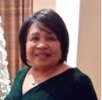
Biography:
Lesline Lewinson has a special interest in spirituality in healthcare. She is a qualified nurse, midwife, health visitor and nurse lecturer. Accordingly, Lesline has acquired a wide-range of nursing experience in both acute and community settings. During the late 1990’s through a Department of Health funded research project, Lesline was influential in improving primary healthcare access for residents on the Broadwater Farm Estate in London, England. However, for a number of years she was involved in nurse education as a senior lecturer in adult nursing, at the University of Hertfordshire. Presently, she is completing PhD studies at Staffordshire University, looking into the spiritual dimension of holistic nursing care.
Abstract:
Spirituality is subjective, broad, multifaceted, and defies consensus in terms of definition. However, there is recognition that the spirituality influences a patient’s physical and mental health, also their wellbeing and quality of life. Accordingly, spiritual care is considered a part of the nurse’s role and is an integral part of holistic nursing care. However, the nursing profession favours the medical model of health that concentrates on the physical and psycho-social aspects of health care, and for the most part neglects the spiritual. Nevertheless, pre-registration nurse education has a responsibility to adequately prepare student nurses for all aspect of their role, but research shows that matters of spirituality are poorly represented in nurse education and training. While debates continue as to whether spirituality education is more ‘caught than taught’, nurses desire to be better equipped to deliver spiritual care. Therefore, some preliminary findings from a grounded theory investigation provides useful information to show that, student nurses will draw on various resources to enable them to fulfil the spiritual part of their role. In addition, clinical experience in hospice and palliative care environments, seem to provide most useful learning opportunities for students’ understanding and facilitation of spiritual needs.
RWABIHAMA Jean Paul
University of Paris, France
Title: Rights of elderly patients at the end of life: the French experience

Biography:
Jean Paul Rwabihama is a Medical Doctor in internal medicine from University of Rwanda and Specialist in Geriatrics after 5 years of training in Paris. He received a Master of Science in Health Law at Paris 7 University and completed his PhD in Ethics and Public Health at the Toulouse University (France); he was a PhD fellow at the Kennedy Institute of Ethics, Georgetown University (USA). Currently, Jean Paul Rwabihama is a Senior Consultant in Geriatrics at Paris Public Hospital (AP-HP) and, Researcher at the Clinical Epidemiology and Ageing Unit, University of Paris-Est Creteil.
Abstract:
The management of terminally ill patients has been improved by the accessibility of palliative care since 1999 in France. The relatives or loved ones were therefore allowed to assist the dying patient until the end. The Kouchner law adopted in 2002 has established the informed consent process but the most important regulation is the Leonetti law. This law concerning the rights of patients at the end of life, permits withholding and withdrawing of treatment for patient at the terminal phase with some limitations such as few highly publicized individual situations. During the past 5 years, the debate about legalization of euthanasia and physician assisted suicide came up to public through media in France. Several national institutions expressed their opinions and official assessments of the Leonetti law revealed a misunderstanding of its spirit among healthcare providers. French public was also unfamiliar of this law published almost 10 years ago. According to the recent Parliament reports, the legislator plans to strengthen this law and then advance directives will become binding in France. This project raises several ethical issues among healthcare providers, such as burnout, especially for those who working in palliative care setting, hospice and long term care department. As it is well recognized, the culture of palliative care is not rather implemented in France, death is still a society’s final taboo and continuing medical education has an important role in extending palliative care in order to improve quality care at the end of life for elderly.
Manel Esteban-Pérez
Rovira I Virgili University, Spain
Title: Complexity of end-of-life care: Criteria and levels of intervention in community health care

Biography:
He did his Bachelor of Medicine and Surgery at Barcelona University, Catalonia, Spain. He is a Specialist in Geriatric Medicine. He also did his Masters in Palliative care at Barcelona University, Catalonia, Spain. Doctorate “cum laude†at Rovira i Virgili University, Tarragona. Catalonia, Spain. Coordinator of PADES team (home supportive care program team) in Reus (Tarragona), Catalonia, Spain. Currently working as an Associate professor at Rovira i Virgili University, Tarragona. Associate professor of Master of “Aging and Healthâ€, Rovira i Virgili University, Tarragona. Coordinator of subjects “Practical assistance to geriatric syndromes and interdisciplinary work†and “End-of-life careâ€, Master of “Aging and Healthâ€, Rovira i Virgili University, Tarragona. Catalonia (Spain)
Abstract:
Definition: The complexity is caused by the emerging of processes, that when they interact, fulfill the criteria to be defined complex systems. Reference model: Our base model is modeled on the needs of patients and families, thus obtaining six areas of complexity: Physical needs, psycho-emotional, socio-family, spiritual, area related directly with death (situation in the last days, grief), and area of ethical aspects. Areas and criteria of complexity: In each area the following are obtained: Base definitions, situations usually creating complexity and criteria of complexity grouped in three levels: Low medium and high. Model of Intervention: The proposal is- Low complexity: Intervention of the community health care team with occasional intervention of the palliative care team. Medium complexity: Shared caring decided between the community health care team and the palliative team. High complexity: main intervention by the palliative team or hospital admission. Conclusions: It is necessary to differentiate between situations that are usually complex and criteria of complexity. The first are those situations that often behave as an emerging process, whereas the criteria of complexity correspond to the actual emergence or its results. The intervention model proposed should improve the collaboration between community care and the palliative team, as this is a co-responsible and dynamic model that does not divide the intervention.
Ki Mo Kim
Korean Institute of Oriental Medicine, Republic of Korea
Title: 5, 3’-dihydroxy-6, 7, 4’-trimethoxyflavanone exerts its anticancer and angiogenesis effects through regulation of the Akt/mTOR signaling pathway in human lung cancer cells

Biography:
Kim has completed his PhD at the 2003 years from Kangwon National University in Korea, and postdoctoral studies from Pittsburgh University School of Medicine. Current, He is the senior researcher of Korean Institute of Oriental Medicine (KIOM). He has published more than 25 papers in reputed journals and has been focus as an natural herb-mediated chemoprevention effect and, Chemotherapy side effects mitigation
Abstract:
5, 3’-dihydroxy-6, 7, 4’-trimethoxyflavanone (DHTMF) is one of the constituents of Viex rotundifolia, a medicinal herb that is used for the treatment of various disorders in China and Korea. In this study we evaluated the antitumor and anti-angiogeneic activities of DHTMF. DHTMF significantly suppressed growth and induced apoptosis in lung carcinoma cells in a dose-dependent manner, as indicated by a decrease in Bcl-2 levels and increases in Bax and cleaved caspase-3 levels. In addition, DHTME treatment significantly reduced the phosphorylation of Akt and mammalian target of rapamycin (mTOR), accompanied by reductions in the protein level of hypoxia-inducible factor (HIF-1α) and vascular endothelial growth factor (VEGF), which are key angiogenic molecules in H522 lung cancer cells. Furthermore DHTMF inhibited VEGF-induced angiogenesis, as indicated by reduced expression of CD34, tube formation and migration in human umbilical vein endothelial cells (HUVECs), as well as reduced neovascularization in an in vivo mouse Matrigel plug assay. DHTMF also inhibited phosphorylation of Akt, mTOR, and p70S6K in HUVECs and lung cancer cells. Taken together, our finding indicated that DHTMF inhibits Akt/mTOR signaling and reduces the expression of HIF-1 α and VEGF in tumor cells, which in turns inhibits endothelial cell-mediated angiogenesis. These results suggest that DHTMF inhibits angiogenesis as well as induces apoptosis via the Akt/mTOR pathway and might elicit pharmacological effects that are useful for treatment of lung cancer.
Mohammed Abduh Alshaqi
Prince Sultan Military Medical City, Saudi Arabia
Title: Adapting to Death, Dying and Bereavement of Geriatric Palliative Medicine and End of Life Care

Biography:
Dr. Mohammed Alshaqi is a Palliative Medicine Doctor. He had MBBS from King Saud University 1992/1993, Arab Board of Family Medicine 2001, then Palliative Care from Canada and King Faisal Specialist Hospital & Research Center at 2006 and 2008. He is now a consultant and head of Palliative Medicine, division of Oncology department at Prince Sultan Military Medical City at Riyadh, capital city of Saudi Arabia. In addition to that, he is a trainer and external examiner of Palliative Medicine of Saudi Commission for Health Specialties and Acting director of Saudi Society of palliative Care since 2013 till present. He is member for many Affiliation and Societies like American academy of family physicians and Saudi society of family and community medicine since 2001. In addition to that, he is a member of Middle East Academy of Medicine of Aging (MEAMA) since 2003, member of International Association for Hospice and Palliative care since 2006, member of Saudi Oncology Society since 2008, member of Saudi Pain Society since 2009, member of Group on Educational Affairs (GEA) for Medical Education Research Program (MERC) since 2011, and member of Arab Society of Palliative Care since 2014 till present.
Abstract:
Our fear of death and the loss of a loved one are two of the most monumental emotional challenges of human existence. This anxiety is usually suppressed and is only exposed when the reality of a possible death is confronted. Fear of death stems from different sources, for example, the thought of our non-existence and the fear of the unknown of what lies beyond death. Palliative care has recognized the power of this suffering and is concerned with helping people cope and adapt. This is incorporated into a philosophy of care that has resulted in the principles of palliative care. In industrialized and technological societies, death has been removed from the family home into institutions with care provided by professionals. This has resulted in a lack of familiarity with the dying process, which may contribute to a fear of death and dying within society. Death, dying and bereavement challenges the fundamental values and meaning of the human experience. Such a threat has the potential to provoke considerable distress and has therefore interested health professionals. It is important while providing care that we do not lose sight of the individual patient involved and the individuality of each experience of dying, death and bereavement. This presentation will review how to improve the understanding of the processes involved, the damaging consequences that can occur and the role of health professionals in caring for the dying and the bereaved.
Margaret Nolan
New York University, USA
Title: Educational Intervention Increases Primary Care Providers’ Comfort in Discussing Advance Care Planning

Biography:
Dr. Margaret Nolan has been a Nurse since 1981 and a Nurse practitioner for over 20, with extensive experience in all aspects of geriatric care. She received her Doctoral degree from Stony Brook and her doctoral project has been on educating primary care providers on discussing end-of-life with their elderly patients. She currently is a Clinical Assistant Professor at NYU College of Nursing and continues her practice at Columbia Presbyterian Medical Center as a nurse practitioner in critical care neurology. She has served as an expert consultant for many geriatric issues and concerns.
Abstract:
Background Advances in medicine have made end-of-life difficult for older adults without prior advance care planning (ACP). Benefits of ACP include decreasing family stress, allowing death with dignity and cost saving at end of life. Despite the benefits, less than a third of the population has ACP. Older adults want their primary care provider to initiate conversations on ACP. Primary care providers rate their own comfort level with ACP discussions as low. The purpose of this project was to increase primary health care providers’ including Physicians, Nurse Practitioners, and Physician Assistants (PCP) comfort in discussing ACP with their older adult patients. Method An 8 step educational intervention on best practice for discussing ACP using the Medical Orders for Life Sustaining Treatment (MOLST) Model was conducted in PCP’s offices. A convenience sample of 64 primary care providers (PCP) from NYC who care for patients over 65 years of age were surveyed using a descriptive, repeated measures design. The pre and posttest instrument is a Communication Strategy Questionnaire for ACP that uses a l4-item Likert scale, with scores ranging from 14-56, measuring comfort in discussing ACP. Results The MOLST intervention significantly improved comfort in discussing ACP for PCP with their patients (p < 0.001). Conclusion A simple 8-step educational intervention demonstrates significant improved comfort level amongst PCPs when discussing end-of-life preferences with patients. Primary care providers can make an impact on older adults end-of-life by discussing advance care
Marci Pounders
Baylor University Medical Center, USA
Title: MFACTS©A New Spiritual Assessment Tool For Palliative Care Chaplains

Biography:
Staff Chaplain assigned to Palliative Care. Works with interdisciplinary team to provide pastoral care, bereavement care and counseling in end-of-life issues to terminally ill patients and their families. Involved in community outreach with local pastors and volunteers in the education of senior adults. Assists with facilitation of advanced directives, decedent care protocol, and Clinical Pastoral Education didactics at Baylor and at Parkland Hospitals. Member of the Baylor Ethics Committee, past co-chair of Pastoral Care Human Resources self-directed ministry team. Coordinator, Pastoral Care “Doula†Volunteer Program. Facilitator of Faith & Grief Luncheons in partnership with Faith Presbyterian Hospice. Public speaker on palliative care, grief, and spirituality at the end-of-life. Campus Worship Coordinator - has raised worship totals from 8,000 to 13,000 in past 4 years. FORMER ASSISTANT PRIEST, ST. JAMES EPISCOPAL CHURCH, DALLAS Liaison for church ministries, with particular oversight over the Prayer Team, Lay Eucharistic Visitors, and the St. James Community Lecture Series. Duties included regular at St. James worship services, leadership of the Wednesday night worship team, special events, disaster preparedness, and Adult Education. Bible class teacher on Sundays and Wednesdays. She is skilled in volunteer recruitment, training and facilitation of programming. In addition, Marci is a published author of articles, reflective essays and poetry.
Abstract:
The chaplain on the palliative care team is in a unique position to address the psycho-social-emotional-spiritual issues of dying patients and their loved ones. However, much of the information regarding the patient's spiritual background may be lost as a result of vague pastoral care notes entered into the electronic health record In consultation with Dr. Mark LaRocca-Pitts, chaplains with Baylor Scott & White Health decided to create a new spiritual assessment tool based on his FACT model (Faith, Access, Coping, Treatment Plan). We expanded on Dr. LaRocca-Pitts' model to create the MFACTS© Spiritual Assessment. Chaplains found that this model provides palliative care practitioners with an in-depth and consistent screening, which assists in the holistic care of the patient and family. Palliative care practitioners across the Baylor Scott & White Health System have been very positive in their evaluation of MFACTS© notes in the electronic health record, as more complete pastoral care notes provide more information on the patient's spiritual and emotional history. Staff chaplains have also been eager to learn the MFACTS© model, as it allows them to become more involved with their palliative care colleagues and the patients on their units.
Maria Luisa de la Rica EscuÃn
Hospital ClÃnico Universitario, Spain
Title: Need for palliative care in institutionalised residents with advanced progressive chronic diseases and a limited life expectancy

Biography:
Abstract:
Objectives To identify and describe the palliative care needs of patients with advanced chronic diseases by all causes and who are institutionalized in a nursing home using NECPAL CCOMS-ICO® tool and other variables. Material and methods Cross-sectional descriptive study of institutionalized patients diagnosed with advanced progressive chronic diseases in the nursing home «Paseo de la Cuba» in Albacete (Spain), from May 1, 2013 to November 1, 2013. The variables were: sex, age, advanced chronic disease, time in the nursing home, existence of advance care directives, incapacity of the patient, donot- resuscitate order, concomitant diseases, treatment, Charlson and Karnofsky indexes, and all variables contained in the NECPAL CCOMS-ICO®. Results The sample size included 130 residents (65% of the total population) that met criteria of multiple morbidity or chronic diseases and to whom the «surprise question» of the NECPAL CCOMS-ICO® instrument was applied. The mean age of the patients was 84.43 years, with 72.3% women, who had a higher mean age than the men. The most prevalent chronic disease was advanced dementia with 86.9%. Advanced directives had been made by 3.8%, and 17.7% were legally incapacitated. There was 70.8% comorbidity according to the Charlson index. The entire sample had a score below 50 on the Karnofsky Index. Comorbidity and multiple medications were characteristic of the sample. The criterion of a negative answer to the surprise question was fulfilled by 64.5%, and all of them obtained a positive NECPAL rating. Conclusions Implementing the NECPAL CCOMS-ICO® tool in those health services that attend to high proportions of chronically ill, such as nursing homes, accompanied by training and adaptation of resources measures can lead to a very significant qualitative and quantitative change in our system.
- Palliative Care Services
Location: 4
Session Introduction
Dawn Fairlie
City University of New York, USA
Title: Words and Experience Matter to Surrogates Making End of Life Decisions

Biography:
Dawn Fairlie has completed her PhD from the Graduate Center, City University of New York. She is an Assistant Professor and an ELNEC Certified Gerontological Nurse Practitioner. She serves on the board of directors for Halos for Angels, a non-profit organization serving cancer patients in her home community. She is also developing a website, I AM PREPARED TM to assist individuals and families with end of life decision making.
Abstract:
This study investigated the relationship between end of life terminologies and decisional conflict in surrogate decision makers using a convenience sample of 234 adults age 50 and older. Participants were randomized into two groups, and each received a vignette that was personalized. The vignettes varied only in the use of the words “Do Not Resuscitate (DNR)†and “Allow Natural Death (AND)â€. The Decisional Conflict Scale (DCS) was administered and demographic data were collected. There was no difference in total DCS score based on AND and DNR versions. However, AND respondents perceived their decision as a good decision, and were eight times more likely to sign the document than DNR participants, indicating that framing influences surrogate decision making at the end of life. Experienced decision makers (EDMs) evolved as a discreet group. They had lower mean total DCS scores and lower mean subscores, indicating that prior experience is an important aspect of end of life decision making. Additionally, AND and EDM participants were more likely to perceive their decision as good and were more likely to be to be sure of their decision, indicating that experienced decision makers respond more favorably to the words Allow Natural Death. The term AND lead to increased likelihood of actually making a decision. Respondents to the DNR version were likely to not sign or postpone signing. Finally, participants were more likely to withdraw from the study when the term DNR was used.
Kathleen Jablonski
University of St. Catherine, USA
Title: New models of Care Using Storytelling as a Way to Better Understand Cancer Survivors Needs

Biography:
Kathleen Jablonski will complete her Doctorate of Nursing Practice in Transcultural Leadership from Augsburg College in May 2015. She is a Professor of Nursing at the University of St. Catherine in St. Paul, MN and practices oncology as a Clinical Nurse Specialist at Optum Health. Her lifelong work with cancer patients and cancer surivors has been presented in a variety of forums fromsurvivorsupportgroupstoNationalOrganizations.
Abstract:
The reality of oncologic illnesses obliges those of us in healthcare to consider the paradox of living life while preparing for death. Or, conversely living when the struggles make the thought of death come as a welcomed guest. It is within this chaos of illness where the rhythm of the universe lies. This is the state of the sacred that leads to an expanding awareness of healing and wholeness. The patient and the healthcare practitioner join in a story of each other—we become parts of each other’s story. By fostering the richness and depth of stories and by looking beyond the lens of nursing and medicine this project uses storytelling to form a picture of how the needs, and ultimately the decisions the individual makes, shape the patterns of the group. Likewise, story telling is a way to learn of the "problematics" that too often go "un-narrated. When we begin to hear through the filter of cultural conformity and the social structures which embrace—or constrain—the person living with cancer we create new ways of healing. This project explores the emic wisdom of the storyteller and can be used in practice and in teaching. Acknowledging that when one steps beyond the boundaries of our profession we can explore the needs of populations more fully. In practice, it is a therapeutic model to create a sacred space to heal. As a teaching model it is used as a foundation to educate students about all ways of knowing.
Mary Goggin
St George’s University Hospitals, NHS Foundation Trust, United Kingdom
Title: The Tension between the Desire to Sustain Life and the Acceptance of Death

Biography:
Mary Goggin works as a Practice Educator at St. George’s University Hospitals, NHS Foundation Trust in London, UK. She has lead responsibility for the training and continuing education of staff new to specialty. She has devised a university Work Based Learning programme to ensure consistency in knowledge and clinical standards. Areas of research include the impact of continuing professional knowledge and competence and loss of a twin. She completed her PhD from University of Brighton. She has presented national and international conferences and is a reviewer of reputed journals.
Abstract:
“Palliative care for (fetus, neonate or infant) with life threatening conditions is an active and total approach to care, from the point of diagnosis or recognition, throughout the child’s life, death and beyond. It embraces the physical, emotional, social and spiritual elements and focuses on the enhancement of quality of life for the (neonatal infant) and support for the family. It includes the management of the distressing symptoms (provision of short breaks) and care through death and bereavement.†ACT 2009 Palliative care requires a holistic approach by the multidisciplinary team who care for the neonate and his/her family. Palliative care planning involves professionals from midwifery, fetal medicine, obstetric, neonatal, community and children’s hospice service, and families. Care provision may vary up until the end of life and there may be transition into and out of active supportive and end of life care. The transition from active care for the neonate to palliative care involves an emotional journey for parents and family. The focus of this talk is on the resultant tension between the desire for life and the acceptance of death. Where death occurs within a short time frame there may be little time for parents to process the events and the accompanying emotional journey. Parents require time to process the events, the death of their baby and the assimilation of the new reality. Bereavement follow-up and counselling support need to be timed to coincide with the parents’ requirements.
Deependra Singh
Finnish Cancer Registry, Finland
Title: Screen detected symptoms of breast cancer and its relation with program performance indicators in Finland

Biography:
Dr. Deependra Singh has completed his MPH at the age of 24 years and doctoral training in epidemiology from University of Tampere. He is currently working as a researcher in Finnish Cancer Registry, Helsinki. He is also a doctoral student in epidemiology at School of Health Sciences, University of Tampere since 2014. He is currently running a project funded by Finnish Cancer Organization on ‘Screen detected symptoms of breast cancer and its relation with screening program performance in Finland’, as a program leader. The initial results from the project has been published in a high profile international journal
Abstract:
A key component of breast cancer screening program is the collection of data on symptoms at the time of screening visit. In many cases, however, the data are not subsequently analyzed for relationships between symptoms and screening program performance. It is a unique study that analyzes the role of symptoms and its relation with screening program performance in a longitudinal outlook. The screening dataset consists of the total number of visits (4.5 million screening visits) made by screening age women since the start of the program and followed for more than 20 years (until 2012). Key symptom variables- lump, retraction, secretion were analyzed for their role with program performance indicators- cancer detection rate, attendance rate, recall rate, etc. in a longitudinal outlook. Various innovative methodological approach are used to better fit the screening data of a repeated (women invited every two years) mammography screening program. Marginal and conditional probability models were developed to calculate the cumulative probability of any or first false positives and cancer detection in those who reported symptoms compared to those with no symptoms. The results shows a promising role that symptoms can contribute to a population-based screening program in addition to mammography screening. The implication of the results can be more favorable in a setting, with no repeated screening program at a population level, where clinical breast examination (CBE) is feasible provided that adequate diagnostic services are available.
Neva L Crogan
Gonzaga University, USA
Title: Person-Centered Care in Nursing Homes: Efficacy of the Sorbet Increases Salivation Intervention

Biography:
A systems approach to improving the quality of life of nursing home elders is Dr. Crogan’s nursing and research focus. Dr. Crogan received her BSN from the University of the State of New York in 1983, a Master’s in Nursing from Eastern Washington University in 1992 and a PhD from Washington State University in 1998. Her post-doctorate education includes a Geriatric Nurse Practitioner Certificate in 2007 from the University of Virginia. She is a Fellow of the American Academy of Nursing and was the co-recipient of the 2013 Sigma Theta Tau International Research Utilization Award. She has published more than 60 data based research articles and has presented at multiple regional, national and international conferences.
Abstract:
The purpose of this study was to test the efficacy of the Sorbet Increases Salivation (SIS) intervention on managing nursing home elder drug-induced xerostomia. The specific aims were to test the effects of SIS on resident food intake and body weight. Using a two-group design, thrity-nine nursing home residents (from two nursing homes) were given 2 ounces of lemon-lime sorbet prior to lunch and dinner meals for 6 weeks. Participants were offered 2 ounces of a non-citrus drink prior to the lunch and dinner meals for 6 weeks during comparison weeks. Twenty-two residents completed both the ocmparison and intervention periods. Of those, 8 gained weight, 10 maintained and 4 lost weight. The amounts of food ingested during dinner increased significantly (p=0.001) from the comparison period to the intervention period (208-253 g). For liquids, the amounts ingested during dinner decreased significantly (p=0.002) from the comparison periods to the intervention period (from 356 ml to 310 ml). This innovative and person-centered approach to alleviating elder dry mouth utilized a simple, easy-to-implement intervention that has the potential of increasing food intake in this at-risk population. The product is enexpensive and the intervention requires very little staff training to initiate. Further study is needed to test the efficacy of the intervention with a larger sample of residents from multiple nursing homes.
Gwendolyn P. Quinn
Moffitt Cancer Center, USA
Title: Reproductive Health Issues among Adolescents and Young Adults with Cancer: The Neglected Side Effect

Biography:
Dr. Quinn is a professor in the Morsani College of Medicine at the University of South Florida and a senior member and director of the Survey Methods Core at the H. Lee Moffitt Cancer Center and Research Institute. She is the principal investigator of a National Institute of Health training program for health care professional on reproductive health and cancer and the author of more than 175 publications on patient-physician communication and health services research
Abstract:
Rates of survivorship among adolescents and young adults [AYA] (ages 15-39) diagnosed with cancer continue to rise. Cancer treatments are often associated with impaired fertility and sexual dysfunction and AYA survivors often experience poor body image, sterility, and improper use of contraception. Specifically, sustained infertility exists in 50-95% of adult cancer survivors. The American Society for Clinical Oncology and the American Academy of Pediatrics recommend oncologists discuss potential loss of fertility and other reproductive health issues with patients prior to treatment and refer interested patients to a reproductive endocrinologist or fertility specialist to consider preservation and contraception options, prior to treatment. AYA concerns about potential reproductive health and infertility may not be addressed by health care providers for a variety of reasons: health care providers do not see fertility as a priority; do not having adequate knowledge and referral sources available; feel uncomfortable discussing sexuality and contraception; do not feel AYA are sexually active; feel reproductive health is not appropriate to discuss with patients with a poor prognosis; are unaware of or do not support assistive reproductive technology, third-party reproduction or posthumous reproduction. This session will address the reproductive health issues of AYA, provide guidance and resources on how to communicate about important issues, and highlight the role of addressing these “side effects†as a form of palliative care.
Richard T. Penson
Massachusetts General Hospital, USA
Title: Schwartz Center Rounds: fostering compassion, communication, and teamwork

Biography:
Dr. Penson came from St Bartholomew's Hospital, London, in 1997 and is Clinical Director of Medical Gynecologic Oncology. His practice is devoted almost exclusively to gynecologic oncology with the majority of patients having ovarian cancer. Dr. Penson attends on the Bigelow General Medical Service at Mass General, sits on the national Gynecologic Oncology Group (GOG) committees for ovarian cancer, rare tumors, and quality of life research, and the NCCN Ovarian Committee. Dr. Penson serves as the chairman for panels C, E and F of the Institutional Review Board of Dana-Farber/Partners Cancer Care, and is a faculty member teaching on Patient Doctor I, for first year Harvard Medical students
Abstract:
Schwartz Center Rounds® are a multidisciplinary forum where clinicians discuss difficult ethical, psychosocial and communication issues that arise in oncology with the goal of encouraging engagement, beating burnout and investing in the patient-caregiver relationship. Rounds were initiated at the MGH Cancer Center in 1997 and have since grown to include multiple sites in many cancer centers nationwide. Schwartz Center Rounds® increase insight into broader aspects of care, increase teamwork, enhance compassion, and provide a non-judgmental and safe place to discuss challenging issues. They decrease feelings of stress and isolation and reconnect staff with their call to serve those in need, in the face of inevitable loss and suffering. Formal evaluation suggests that Rounds® may enhance compassion, professional support, communication, teamwork, and have resulted in institutional changes that enhance patient care and safety. Schwartz Center Rounds® demonstrate a tangible commitment to the adage ‘never worry alone’, and supports us in our love for what we do, and loving those with whom we work.
Karen Glaetzer
Flinders University, Australia
Title: PARAMEDICS AND PALLIATIVE CARE – AN UNLIKELY ALLIANCE

Biography:
Karen Glaetzer has 27 years’ experience in Palliative Care. She was the first nurse in Australia to be endorsed as a Nurse Practitioner in the specialty of Palliative Care in August 2003. She has an academic appointment with the School of Medicine, Flinders University. Karen has post graduate qualifications in Oncology, Bioethics, Palliative Care and a Master of Nursing (Nurse Practitioner). Her special interest areas include Mental Health, the Disability Sector and ALS. Karen is actively involved in service improvement and research projects across a variety of subject areas
Abstract:
Delivering care to patients in the environment of their choice is a goal of good palliative care, while this is relatively easy with good planning, the unplanned emergency response requires providers to be creative and think laterally. Traditionally, palliative care services throughout the world have provided their own after-hours services with on-call staff providing home visits when required. For smaller jurisdictions, this is very expensive and resource intensive with a high burden on staff who work business hours as well as providing after-hours support to their clients. Extended care paramedics (ECPs) are senior clinicians with extensive experience charged with the task of managing appropriate patients in the community. This is a 24 hour service, funded by the State Government, with staff employed to be on duty, rather than a callback system which has been the traditional model for palliative care after-hours service delivery. Historically, palliative care services have educated carers not to call an ambulance when a patient is dying. This stance was taken because the patient may be subjected to resuscitation attempts or possible transport to an emergency department. The results of a formal evaluation will be presented which demonstrates that such a model is not only possible but also an effective economic strategy meeting the needs of this particular group of patients
Rebecca Keith
St. Andrew’s Hospice, Scotland
Title: Transfusion Practices in a Specialist Palliative Care Unit

Biography:
Abstract:
Background Anaemia is a common problem in patients with advanced cancer. However, few of these patients receive a blood transfusion. There is little guidance available to help in identifying which groups of patients are more likely to benefit. The decision to transfuse remains based upon patient symptom burden and clinical judgement. Aims The main aims of this audit were to outline the use of blood transfusions in patients with advanced cancer in a palliative care unit and to find the impact of blood transfusion on patient symptom burden and survival. Methods Retrospective audit of all patients with advanced cancer receiving a blood transfusion in a specialist palliative care unit over an eight month period. Patients receiving cancer treatment were excluded. Data collected included demographics, haemoglobin (Hb) and symptoms pretransfusion, units transfused, Hb and symptoms post-transfusion and survival post-transfusion. Results Over the study period 13 patients were transfused a total of 31 units of blood in 15 transfusion episodes. Most patients received a single transfusion of 2 units of blood with a pretransfusion mean Hb of 7.06g/dl, and post-transfusion Hb of 8.98g/dl. Blood transfusion produced symptomatic benefit in 73% of all episodes, and mean survival was 35 days after first transfusion. Conclusion The decision to transfuse a patient who has advanced cancer remains difficult and requires a considered approach. This audit supports the use of a restrictive blood transfusion policy but highlights the need for clear guidelines to allow clinicians to make evidence-based decisions.
- Pain Management
Location: 4
Session Introduction
Stephen R. Marrone
Long Island University, USA
Title: The Influence of Culture on the Pain Experience

Biography:
Dr. Stephen R. Marrone is a registered professional nurse with more than three decades of experience in the roles of educator, clinician, administrator, consultant, researcher, and scholar in healthcare and academic settings in the USA and in the Middle East. He earned his Bachelor of Science Degree in Nursing from Long Island University in Brooklyn, New York, his Master of Science Degree in Nursing as a Cardiopulmonary Clinical Nurse Specialist from the University of Delaware, and his Doctor of Education Degree in Nursing from Teachers College Columbia University Executive Program for Nurses in New York City. Dr. Marrone is board certified in Nursing Professional Development, as a Nurse Executive, Advanced, and in Transcultural Nursing, Advanced. He is a Six Sigma Green Belt, a TeamSTEPPS Master Trainer, a Fellow of the New York Academy of Medicine, a Leadership Fellow in the Center for Leadership Excellence of the American Association of Critical Care Nurses, a Transcultural Nursing Scholar, and the current President of the Transcultural Nursing Society, International. Dr. Marrone has published, presented, and consulted nationally and internationally on topics related to Transcultural Nursing, Nursing Education, Nursing Administration, Organizational Cultural Competence, Health Disparities, Evidence-based Practice, and Interprofessional Education and Practice. He led the design of the first Competency-based Nursing Practice Model in a Multicultural Setting and consulted extensively throughout the Middle East to implement the program in a variety of healthcare settings. He also has a track record of success in leading interprofessional teams in the design, implementation, and evaluation of Diversity and Inclusion Models within the healthcare setting. One such model was recognized as a best practice by the American Organization of Nurse Executives (AONE) and included in the AONE Diversity in Healthcare Organizations Toolkit. Dr. Marrone is the recipient of the American Organization of Nurse Executives/American Nurses Credentialing Center, PRISM Diversity Award and the Nursing Spectrum New York/New Jersey Regional Award for Advancing and Leading the Profession. He is a member of the New York State Campaign for Action Diversity Subcommittee and serves as a Peer Reviewer for the Journal of Transcultural Nursing and the Journal of Clinical Nursing.
Abstract:
The purpose of this presentation is to explore the influence of culture on the pain experience. Evidence-based culturally congruent best practices in pain management for diverse groups will be discussed. Emic and etic attitudes toward pain, expressions of pain, pain assessment, pain management, pain responses (stoic and emotive), use of complementary/alternative practices, use of indigenous/traditional therapies, and bio-cultural variations among cultural groups will be examined. Implications for practice and education will be explored. Pain is a universal human experience. Individual beliefs about pain are guided by ethnicity, culture, age, gender, emotional factors, family/interpersonal relationships, and spirituality/religious heritage. Evidence supports that clients of ethnic minorities and racially and linguistically discordant client-provider relationships receive inadequate pain management and report decreased satisfaction with pain management. Therefore, it is a clinical imperative that healthcare practitioners integrate culturally congruent approaches to pain assessment and management into practice. Healthcare teams are charged with providing culturally competent care, designing client- and family-centered care models, enhancing client engagement, minimizing health disparities, and delivering safe care. Thus, healthcare teams provide care to diverse clients experiencing pain in a variety of settings and across the life span. Recognizing and acknowledging differences in cultural beliefs regarding the pain experience (clients and providers alike) is intended to minimize cultural imposition - the tendency of a person or group to impose their values and patterns of behavior onto others - thereby leading to the delivery of culturally congruent care – care that is meaningful, beneficial, satisfying, and fits with the client’s values and beliefs.
Martine Lagacé
University of Ottawa, Canada
Title: Caring with Dignity? Understanding ageist communication from the perspective of Canadian seniors in long term care facilities

Biography:
Martine Lagacé holds a PdD in experimental psychology and is currently an associate professor at the Department of communication (University of Ottawa). She has done extensive research on the topic of ageism, exploring its causes and consequences from the perspective of older workers as well retired and/or frail seniors. She has published several books and papers in reputed journals addressing ageing and ageism and has been serving as an editorial board member of reputed journals.
Abstract:
Western culture not only strongly stresses an individualistic paradigm that values independence and economic productivity but it also nourishes a profoundly fearful rapport with death. Such a paradigm paves the way for ageist beliefs and attitudes toward the elderly, mostly frail elderly who are often portrayed, in public discourses at least, as a burden to society. Ageism is often expressed in the most implicit and subtle manner, notably through patronized communication. The first goal of this study was to understand how institutionalized elders assess communication with caregivers and specifically whether they perceive that such communication is ageist. The second and third goals were to determine ageism's impact on well-being in regards to quality of life in the home, as well as on elders’ coping strategies. To do so, qualitative interviews were conducted with a sample of 33 seniors living in four public long-term care facilities in the province of Quebec (Canada). Results reveal that the large majority of elderly identified ageist communication and attitudes through their daily interactions with caregivers. Moreover, participants who felt were the target of ageist communication and attitudes tend to be dissatisfied in terms of quality of life in the home. Finally, data analysis show that participants predominantly rely on avoidance strategies and to a much lesser extent on confrontational strategies to deal with ageist situations. Results are discussed in the context of long term care, aging, ageism and communication.
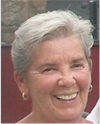
Biography:
Dr. Weissman completed her DNP from Case Western Reserve University and has a Post Masters Certificate as a Geriatric Nurse Practitioner from Binghamton University. She has combined academia with clinical practice focusing primary care on the elder adult and their needs at the end of life. Dr. Weissman is presently part time faculty at Capella University; she takes her therapy dog Rerun to visit patients in Hospice and long term care.
Abstract:
It is vital that a curriculum provides nursing students with the skills and confidence to meet the health care needs of society. Clear communication is an essential skill for all nurses and some areas of communication are more challenging for both students and educators. Communication regarding end of life (EOL) is perhaps the most challenging because of our death-denying culture and discomfort with this topic. There is one curriculum, The End of Life Nursing Education Consortium (ELNEC), studied at the graduate level; however, this program has not been implemented at the associate degree level. ELNEC is comprised of nine teaching modules that enhance knowledge, attitudes, and skills by using the cognitive, affective, and psychomotor domains of learning. This study is focused on the sixth teaching module: communication. Employing a pretest, posttest quasi-experimental design this researcher planned didactic content related to EOL to two groups of first year nursing students. Both groups used a common nursing curriculum at two demographically separate campuses of the same university. The intervention group also received the ELNEC communication module. Tools used for collecting information focused on any change(s) in self-efficacy and/or attitudes. Each participant completed the Visual Analog Scale (measuring self-efficacy) pretest and posttest intervention, as well as the Frommelt Attitudes Toward Care of the Dying Scale. The results of this pilot study provided positive outcomes similar to studies completed with the ELNEC curriculum at the graduate level. It also added the measure of self-efficacy in communication with the dying patient, which is new to the research in this area.
Stephen D. Krau
Vanderbilt University Medical Center, USA
Title: Cytochrome p450: Why the Same Drugs Used in Palliative Care Do Not Work the Same on Everyone

Biography:
Dr. Krau received a BSN from Incarnate Word University in San Antonio, Texas, and a MSN from St. Xavier University in Chicago, IL. His doctoral preparation was completed at the University of Tennessee, Knoxville. His dissertation focused on the experience of patients with Implantable Cardioverter Defibrillators, with an emphasis on qualitative methods, particularly existential phenomenology.
Abstract:
Although the science related to variation in responses to medication has been developing for decades, the importance and practical application has not translated into clinical practice. The first step in improving outcomes related to individual medication response variation based on gender, and race, is in the examination of evidence that can result in strategies to provide effect medical care. For end of life care to be equitable, culturally congruent, and overall competent, this aspect of patient care demands consideration and illumination. Inter-individual variation in drug response poses a serious problem in the management of patients who are receiving medications to treat or prevent any disease or illness, or to provide comfort during end of life. Due to individual variations in response to drug therapy, this variability can result in toxicity and adverse drug reactions (ADRs). Major factors that account for differences in drug response include cultural practices, race (genetic composition), and gender. These factors merit consideration when determining which medication and dosage will provide appropriate treatment, or pain relief. Persons who are prescribing, administering, or taking medications can make the best decisions with regard to the most effective medication regimen, when they understand fundamental aspects of inter-individual variations and disparities in drug responses. One specific factor genetic factor that accounts for the variation in drug response is Cytochrome p450. Although knowledge about the impact of Cytochrome p450 on individual variations in drug response has been known for decades, the transition to clinical practice has not evolved. It is estimated that 90% of current prescribed medications are mediated by these enzymes that result in variations based on the individual's phenotype. When considering cultural practices and racial differences, in many cases we are under medicating, overmedicating or using the wrong medication to achieve a specific outcome. For example, the mortality rate among African American women in the United States with breast cancer is unacceptable. This is in part due to the fact that clinical drug trials are done with primarily Caucasian females. Drug guidelines and doses established based on these data involving a predominant group. When medications that are effective in one racial group are given for same illnesses in another racial group, the medications can be not only ineffective, but detrimental. For competent and equitable palliative care, health care professionals have a responsibility to enhance knowledge of scientific data that supports variation based on race and gender. Only through recognizing the value of the evidence and it implications, can transcultural nursing related to medication prescription and administration truly be competent, skilled, and effective.


